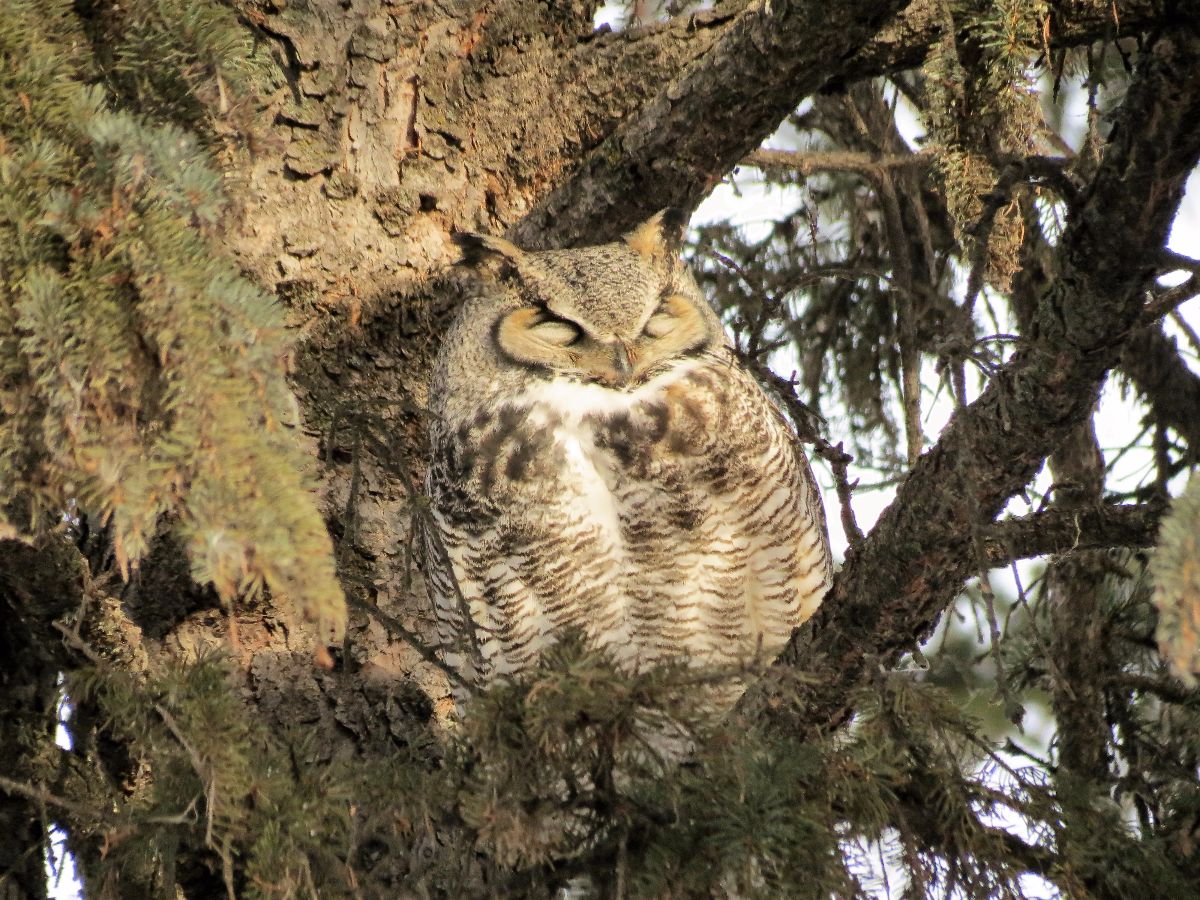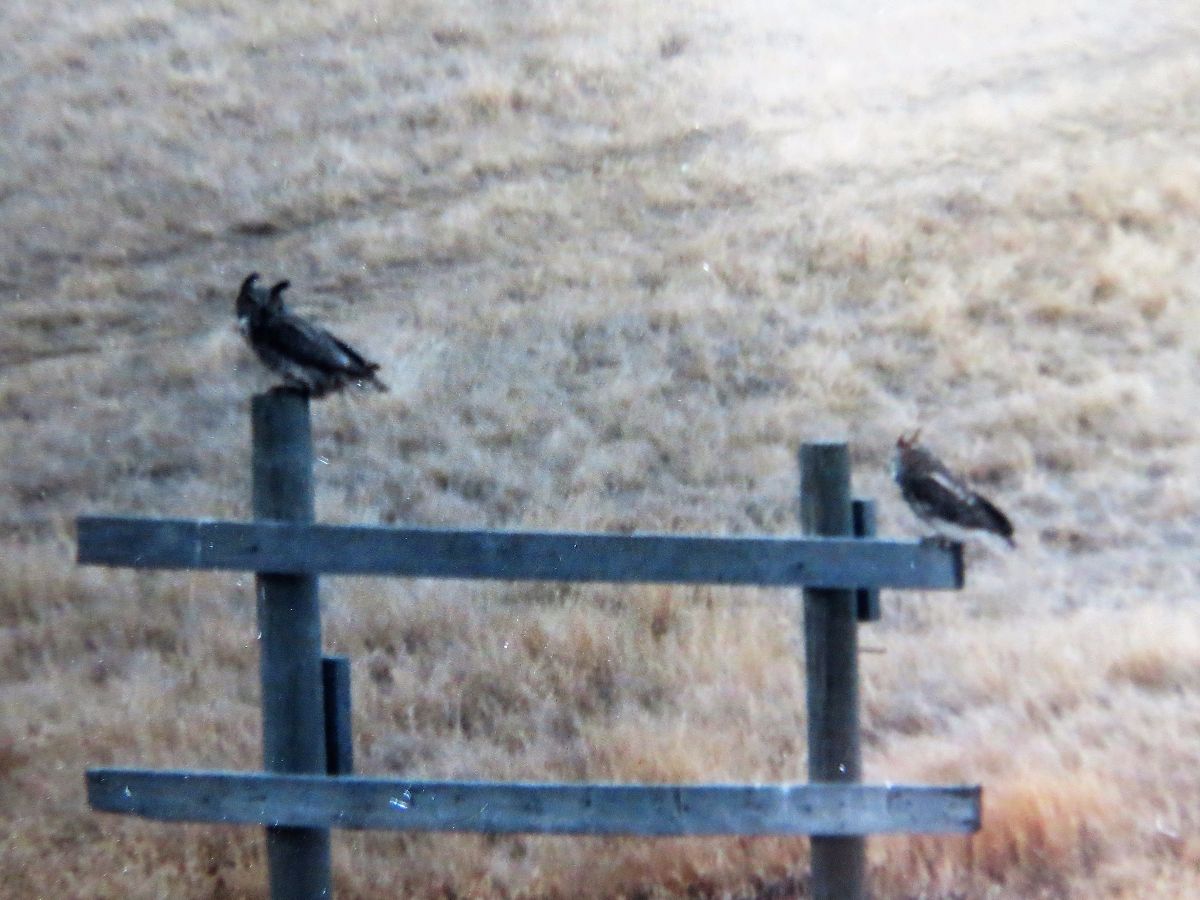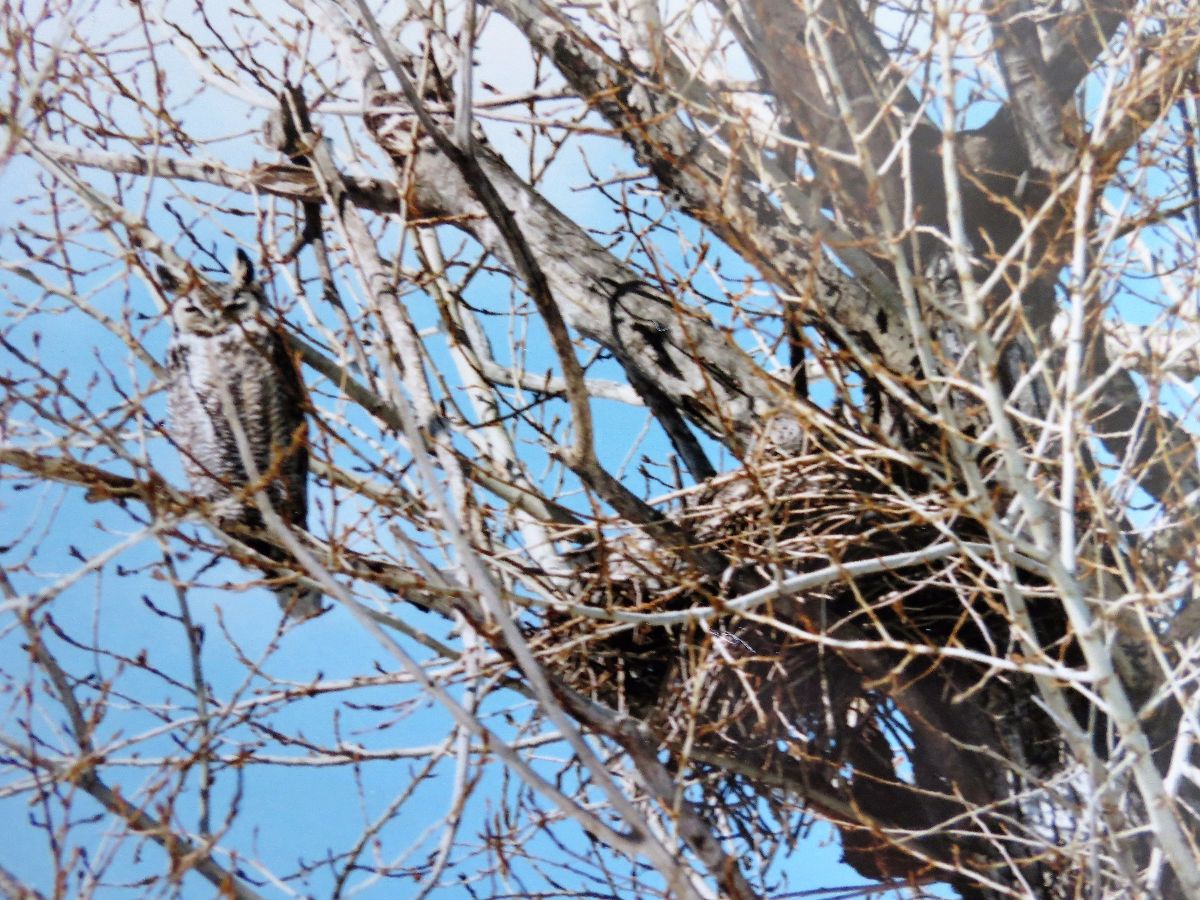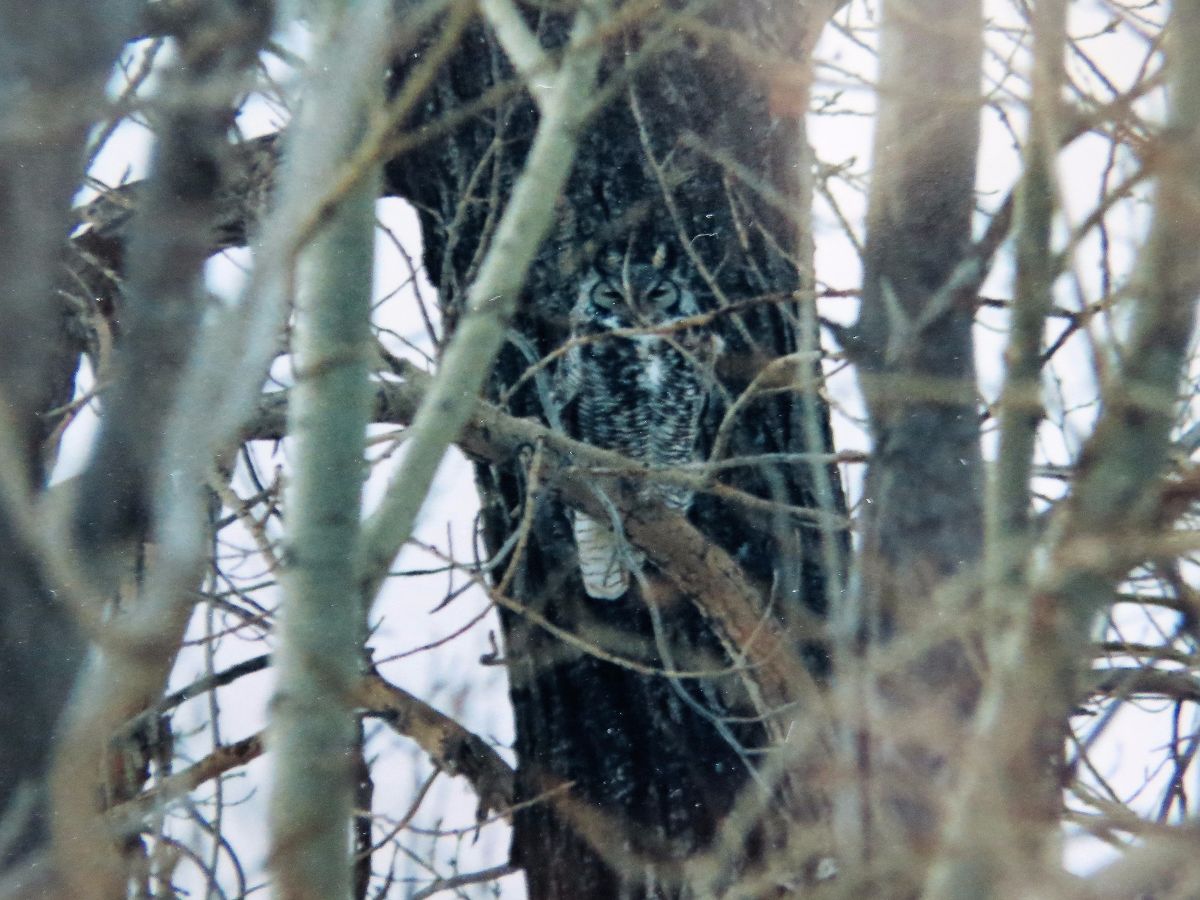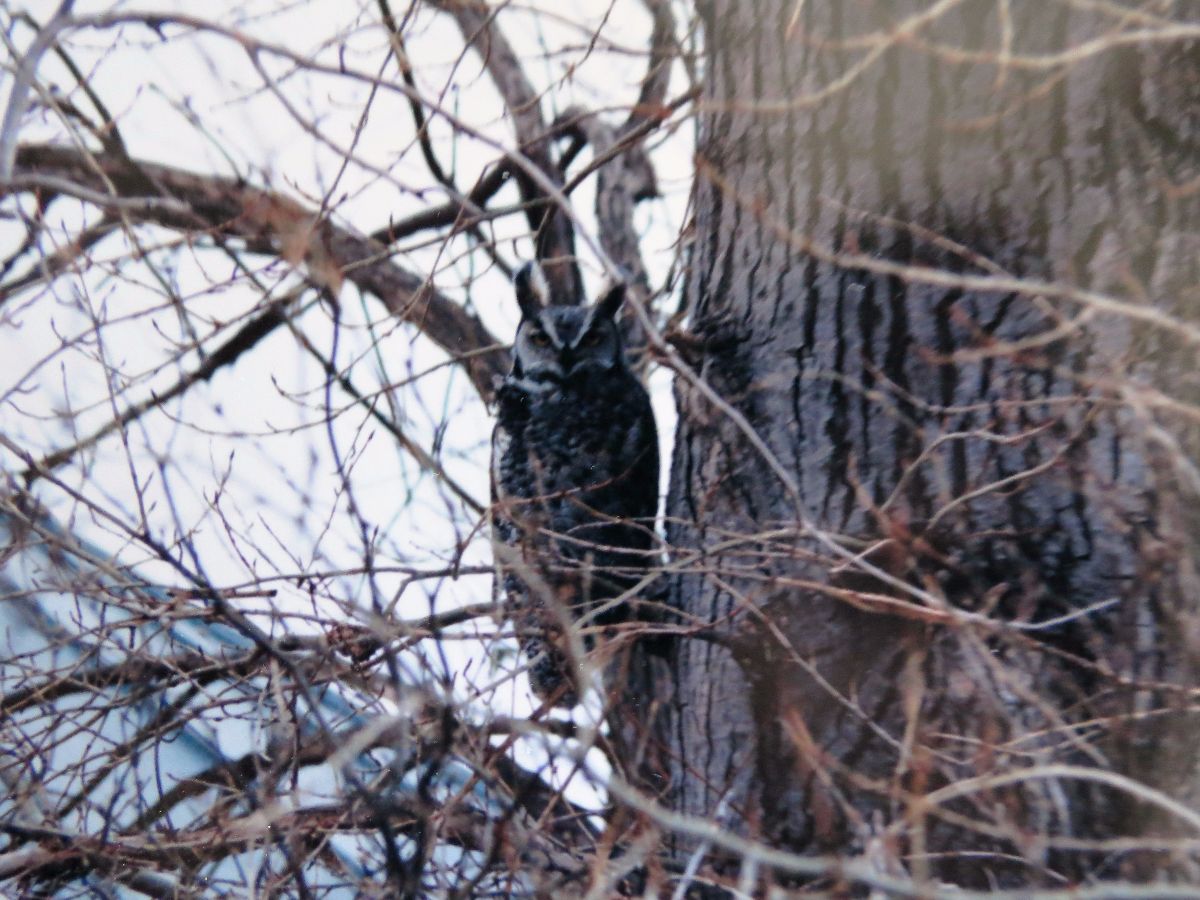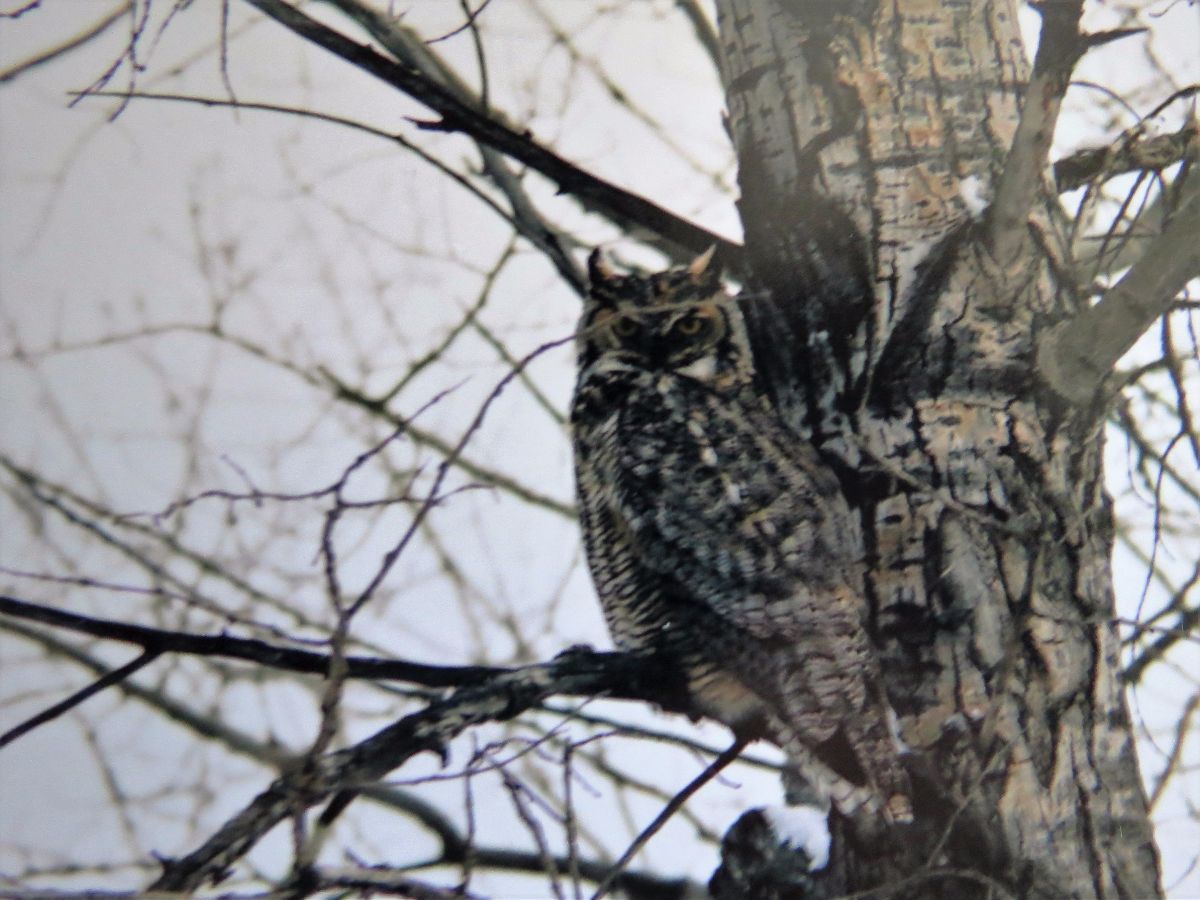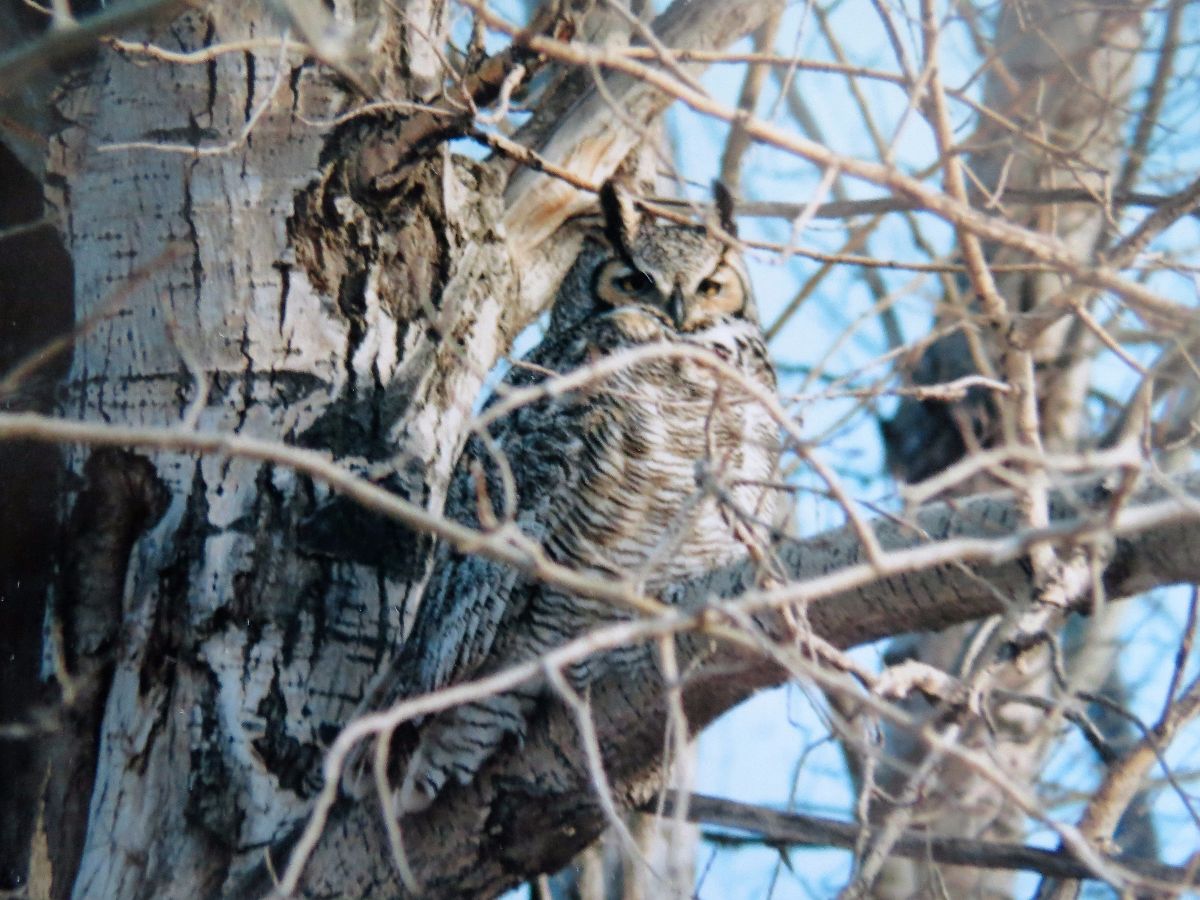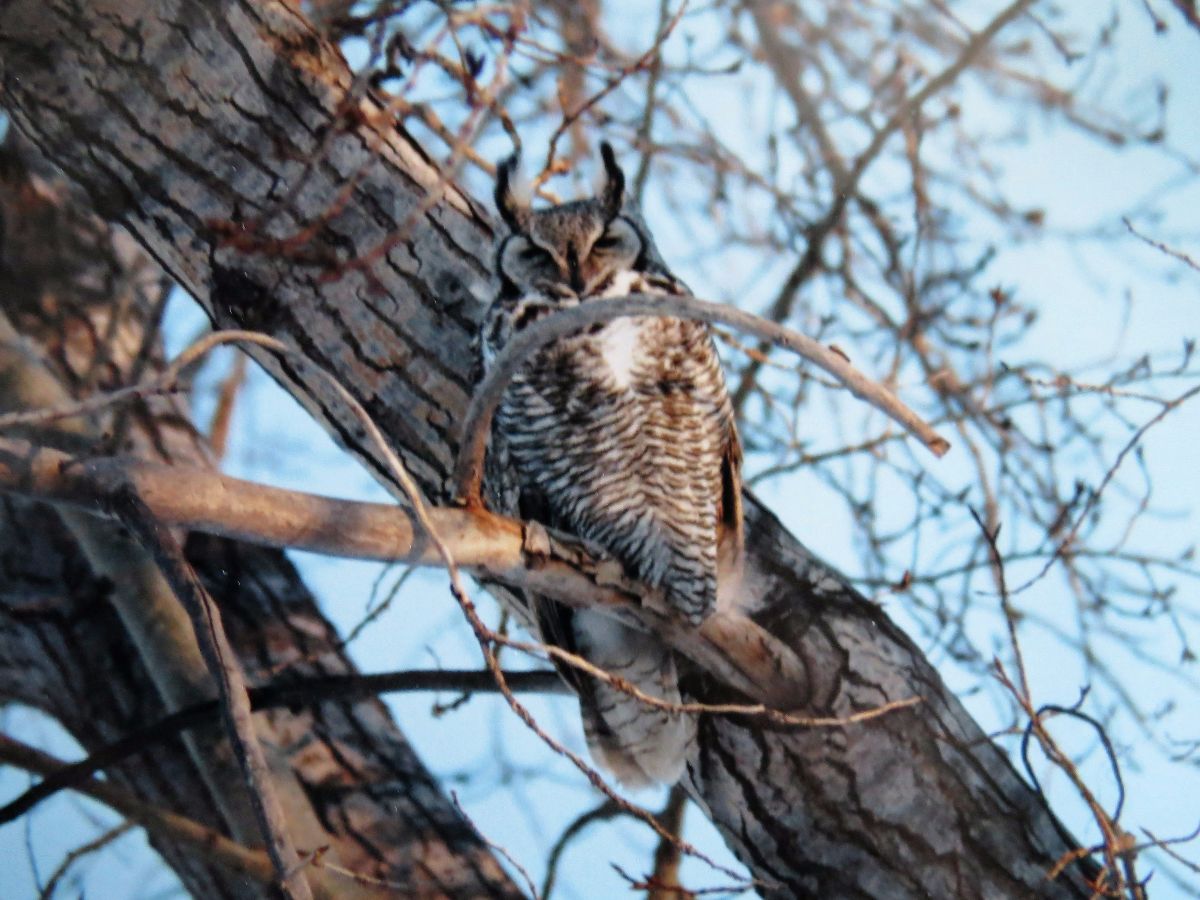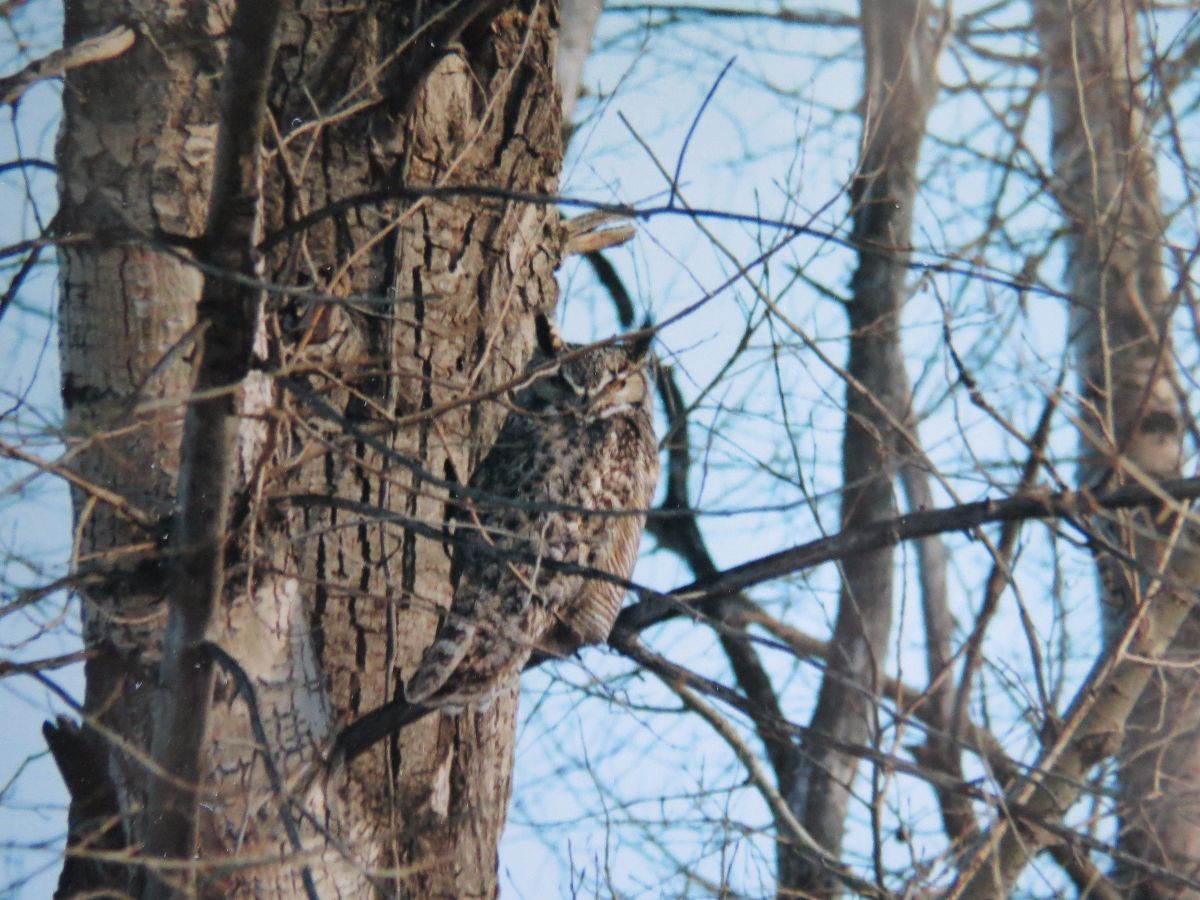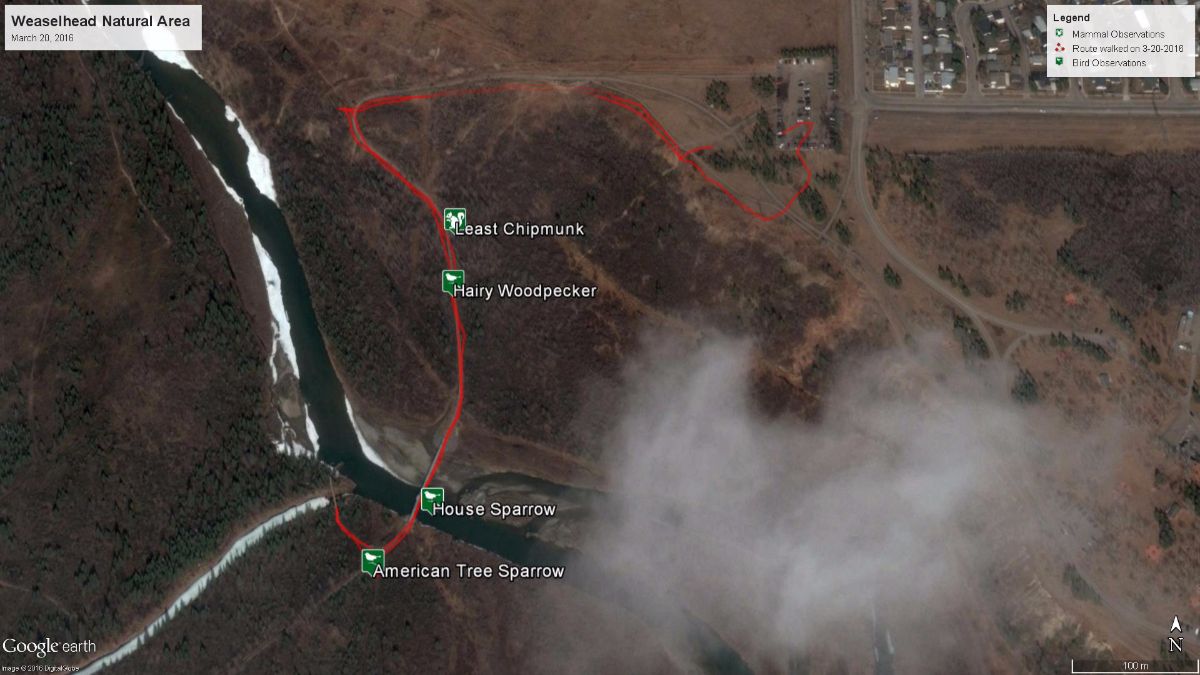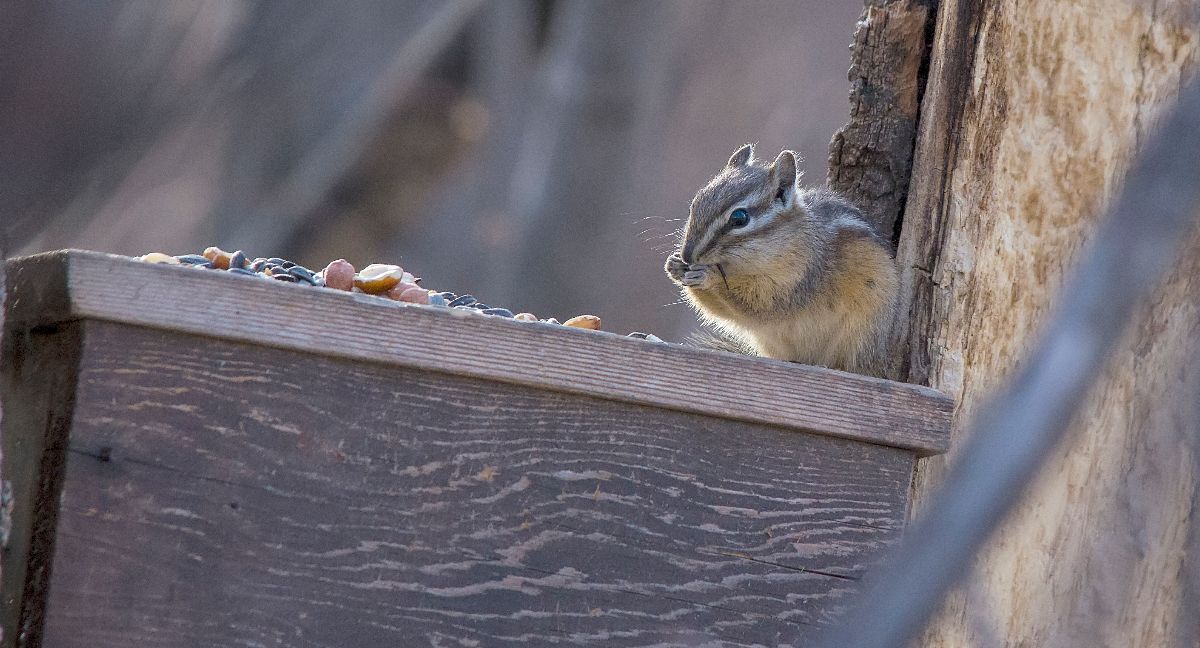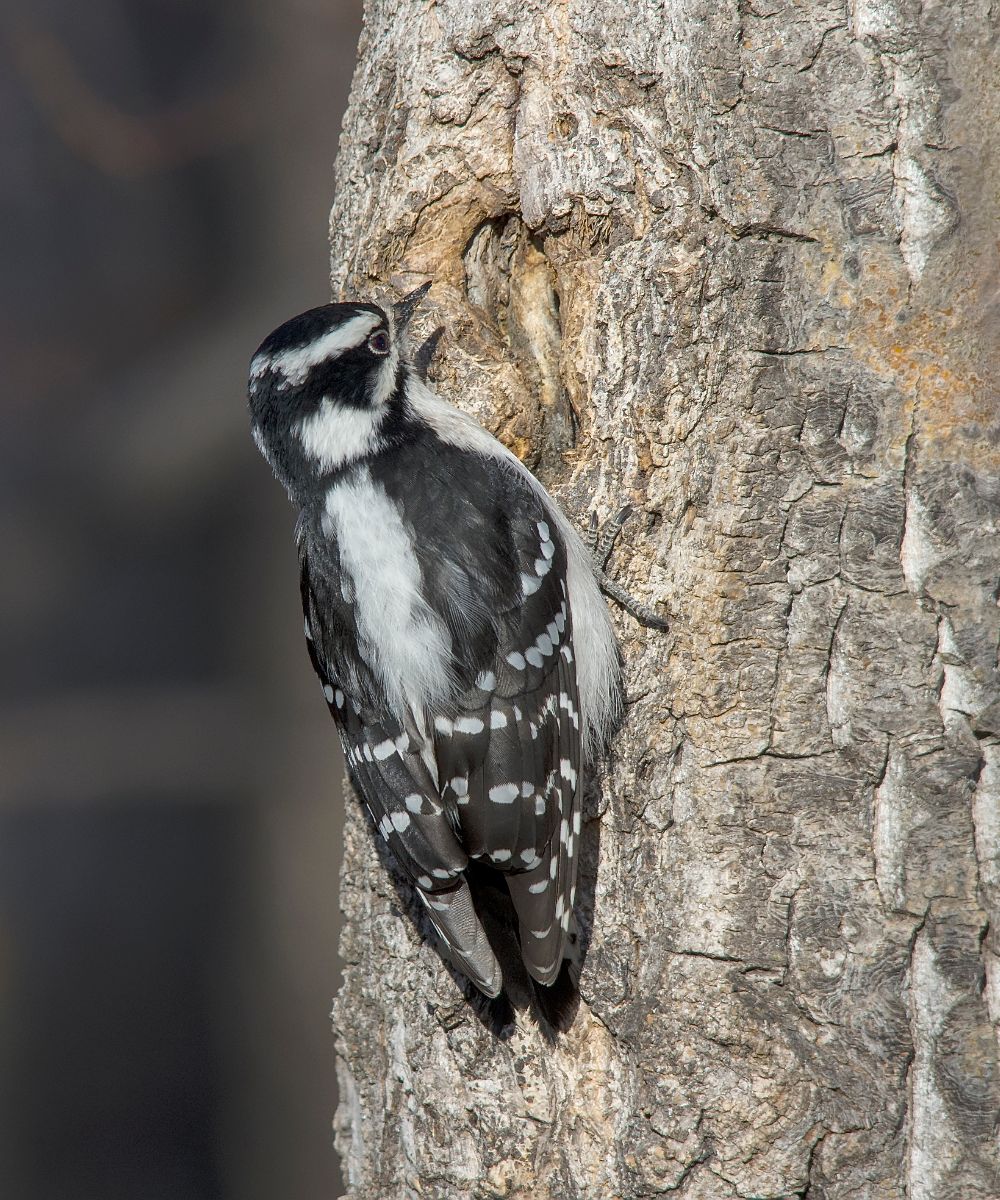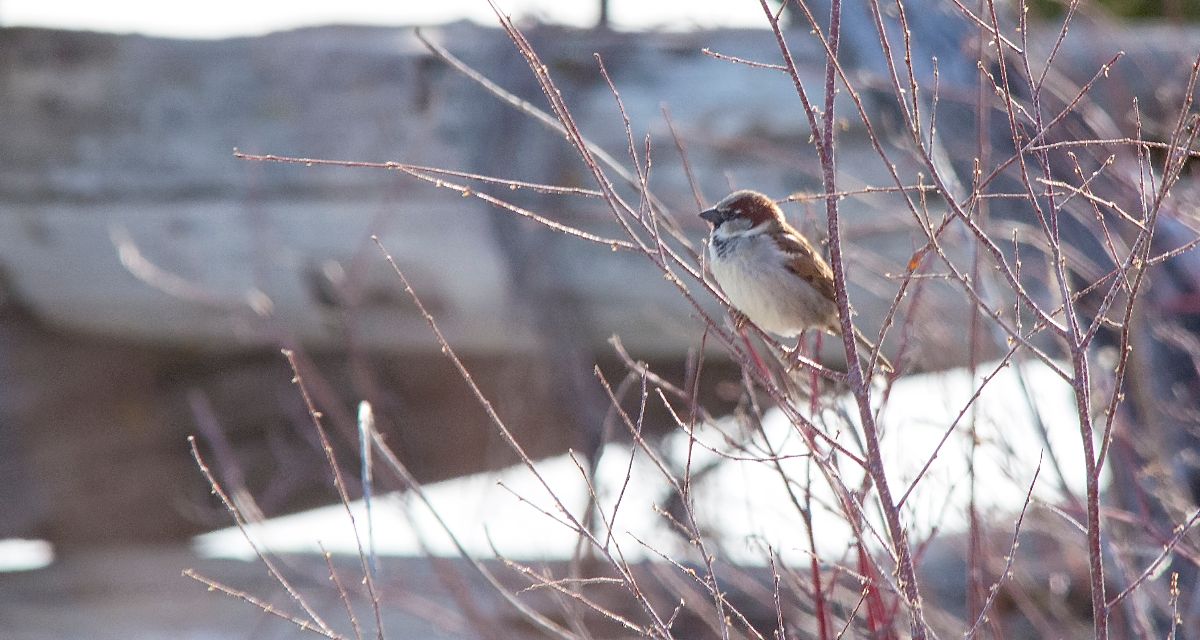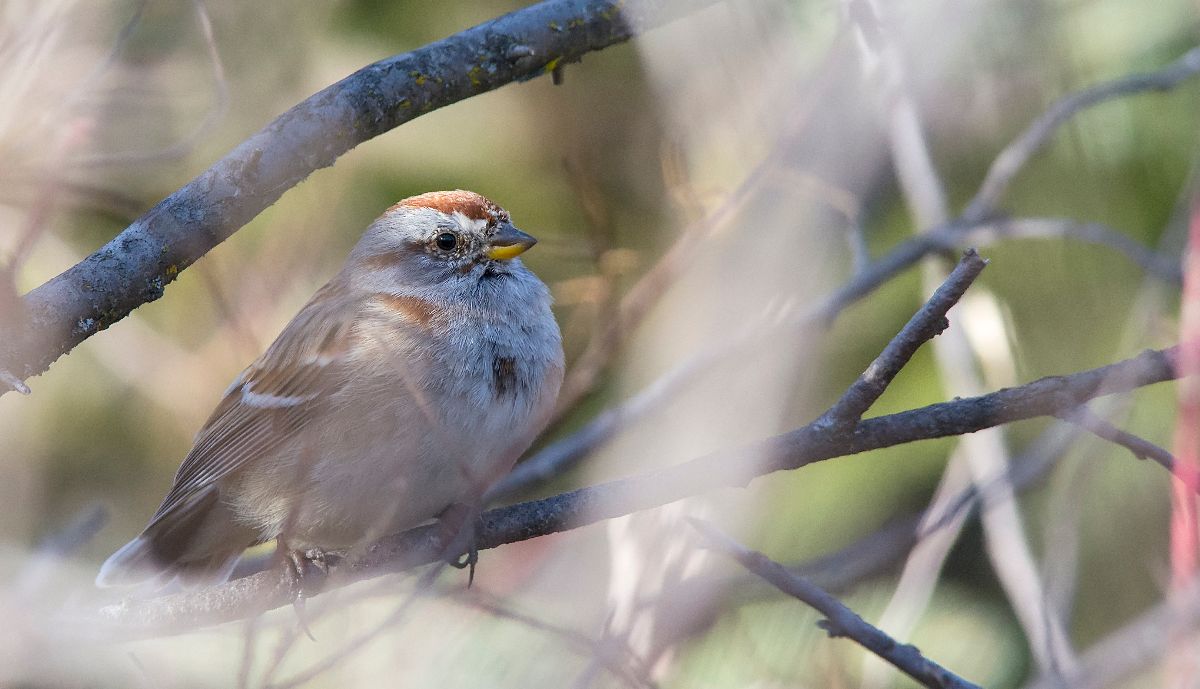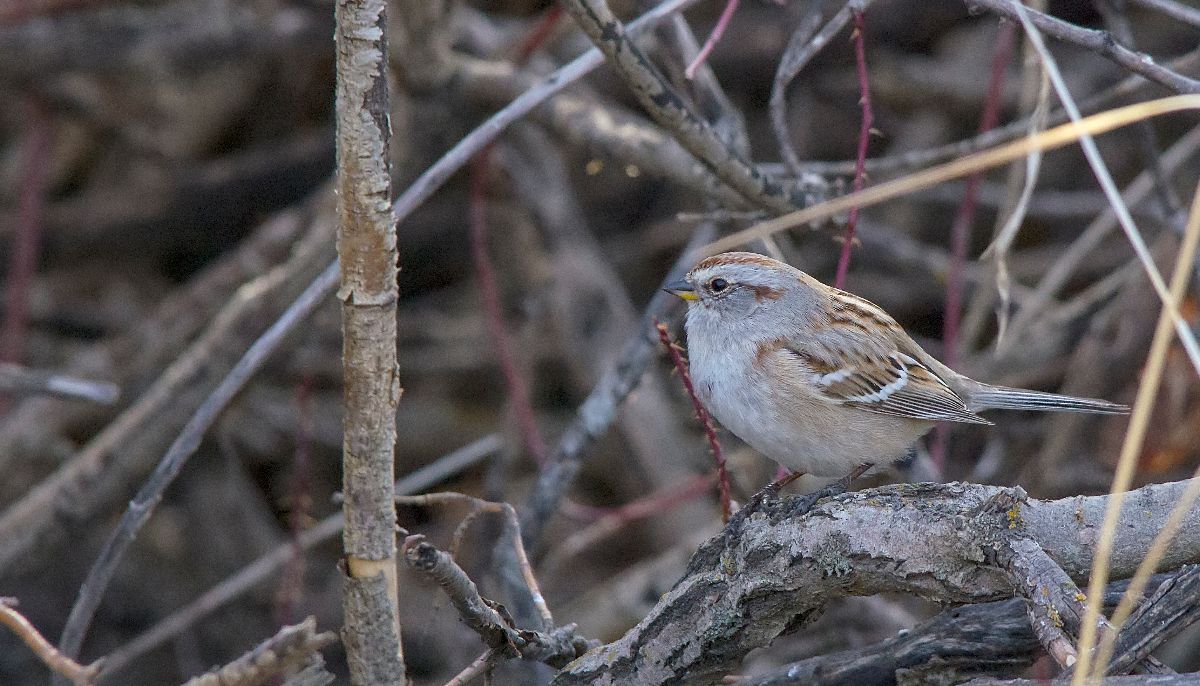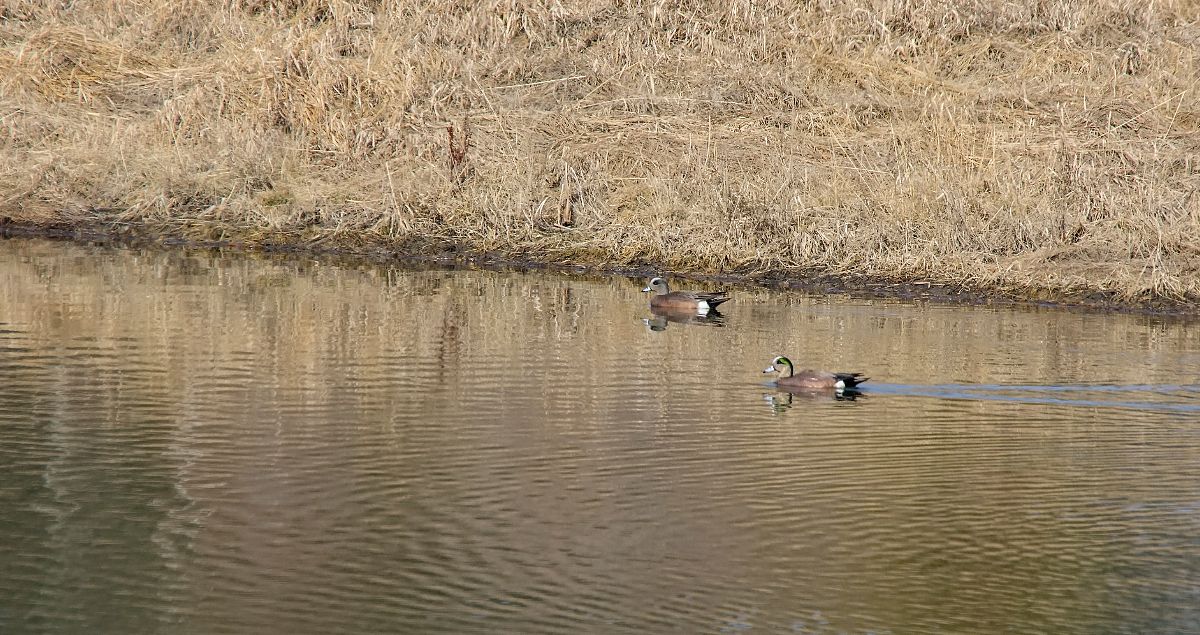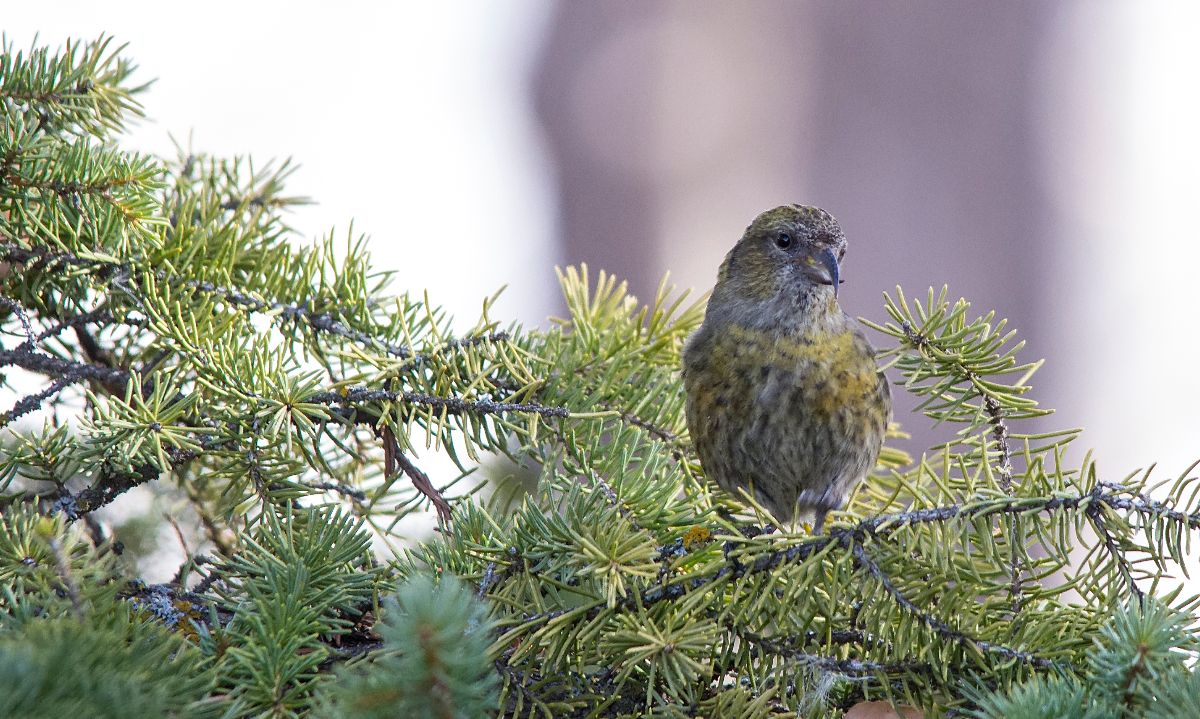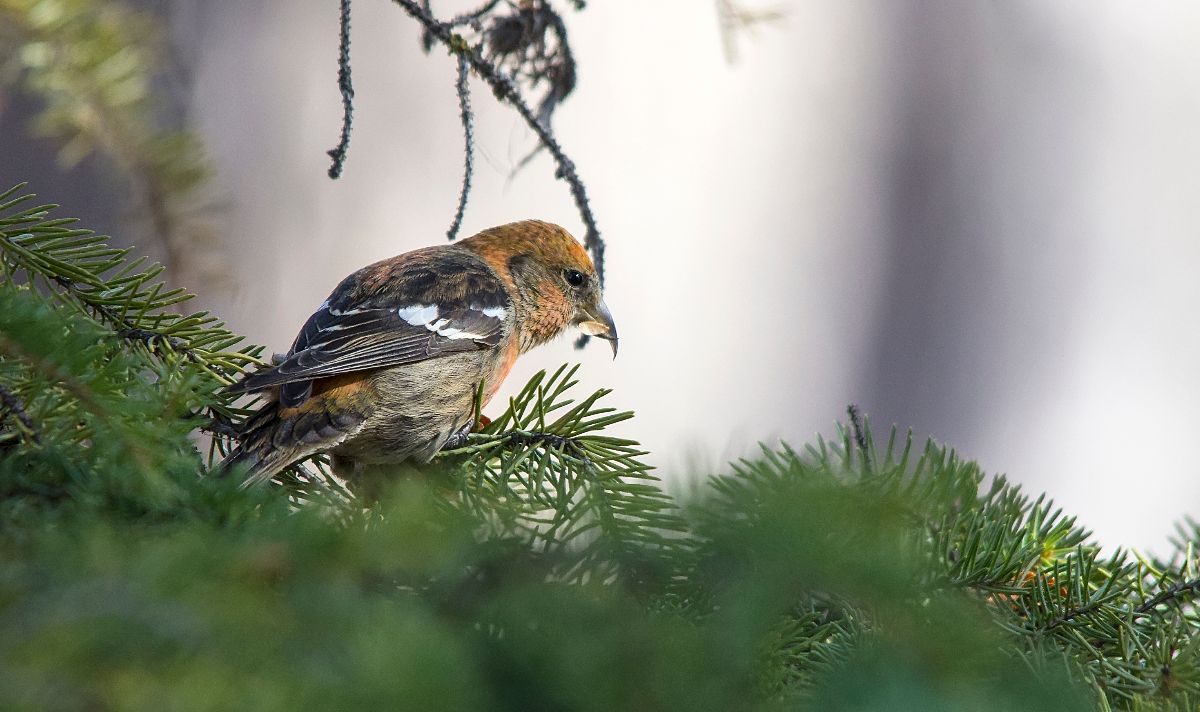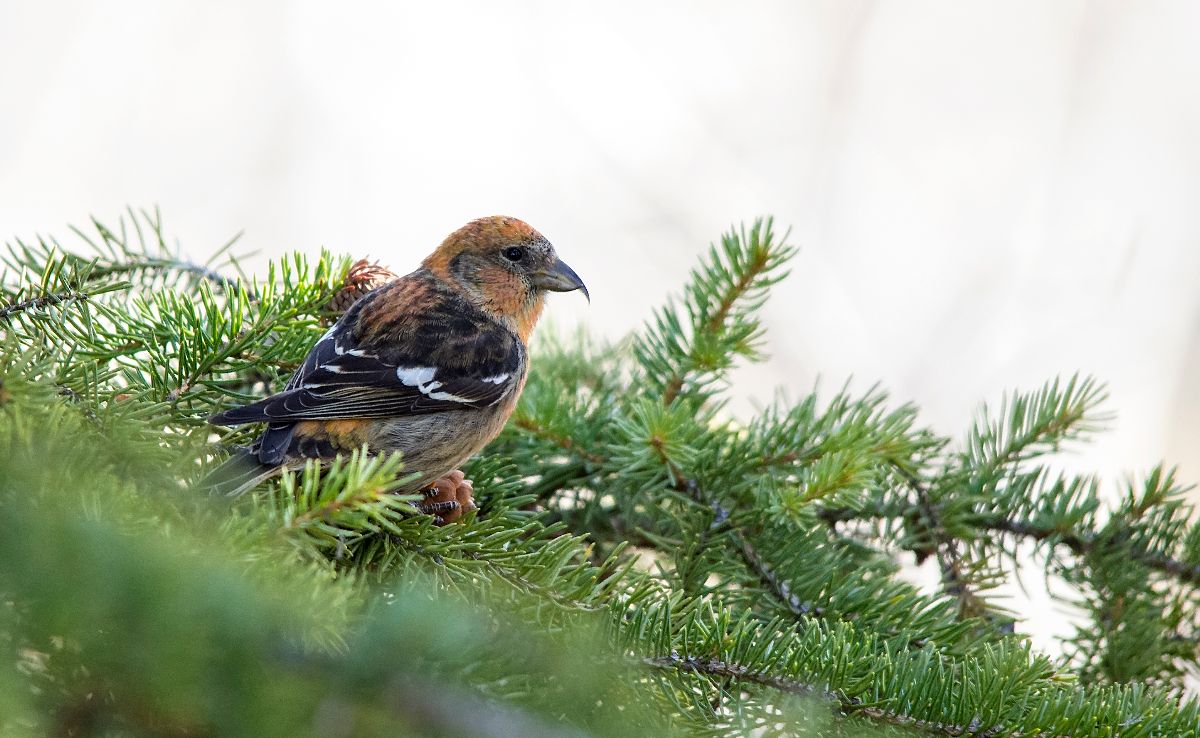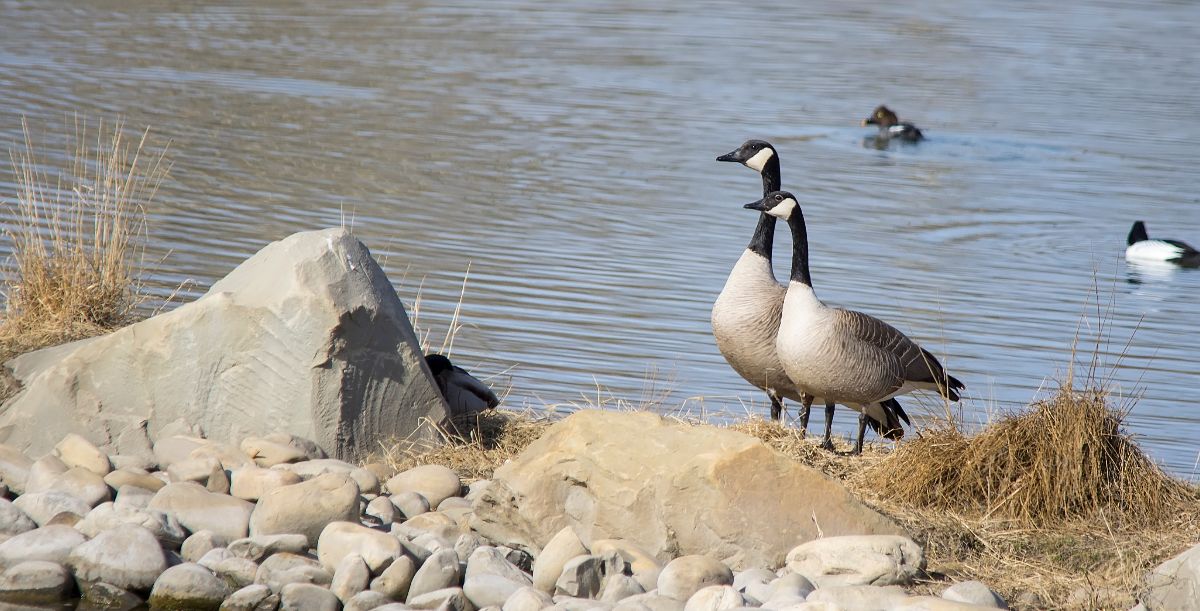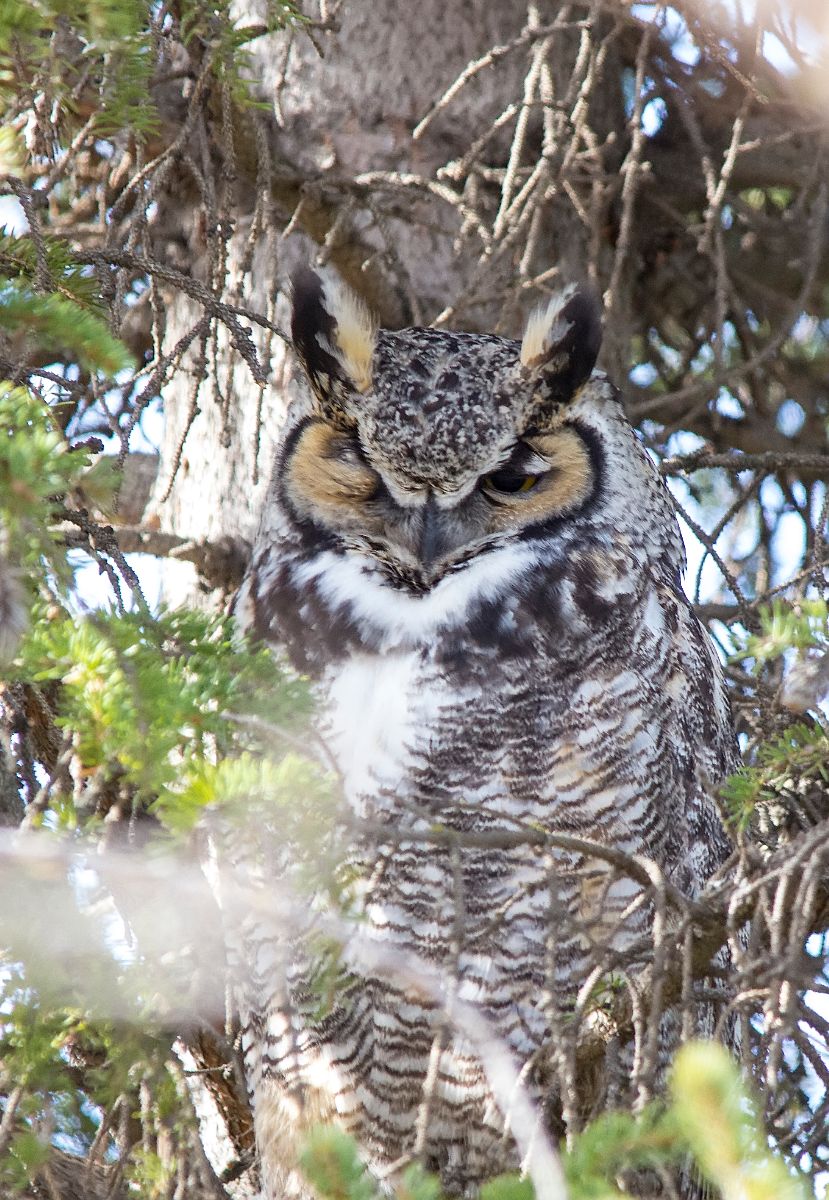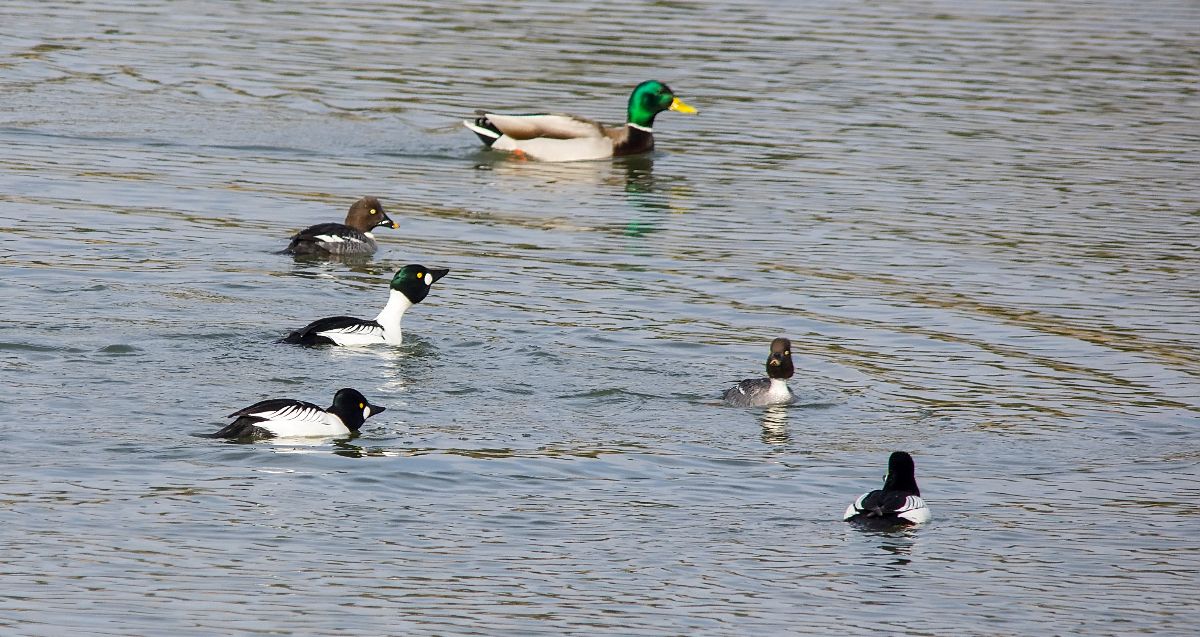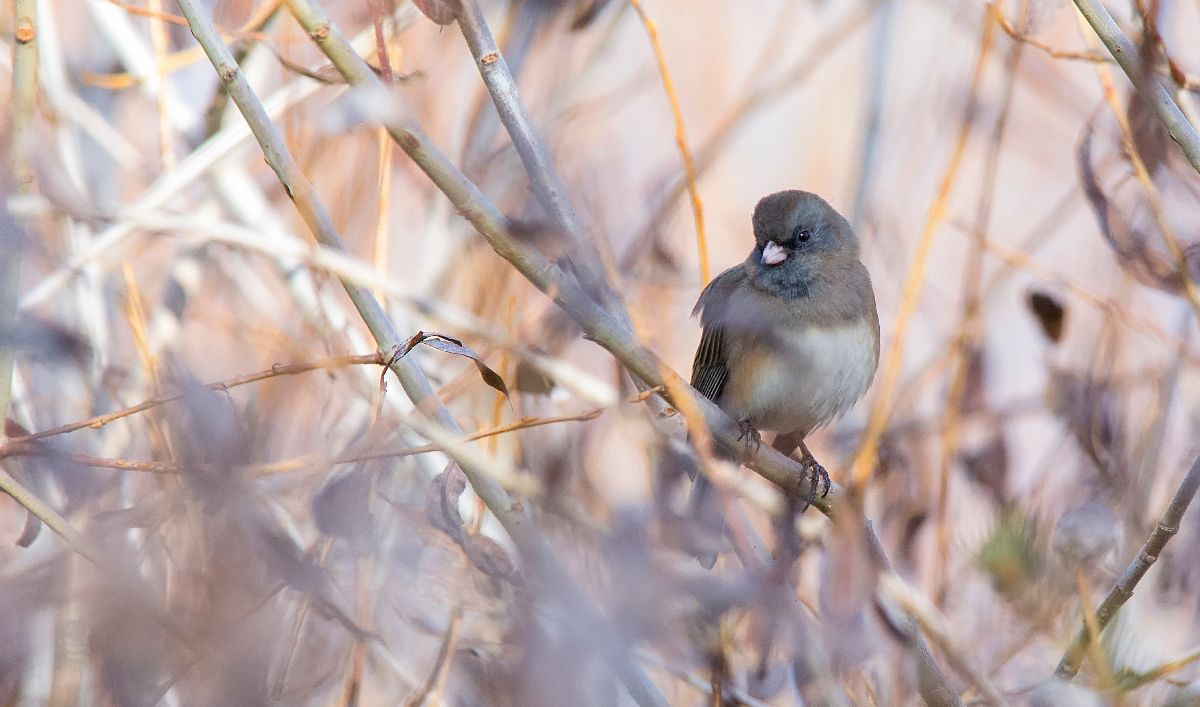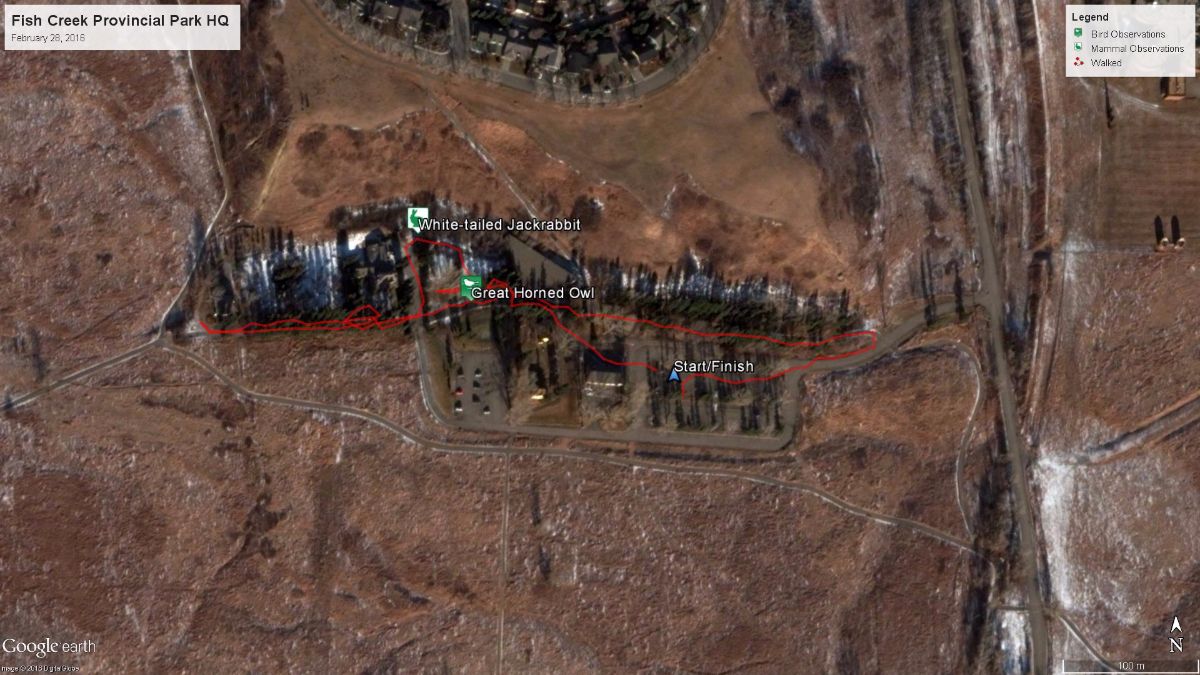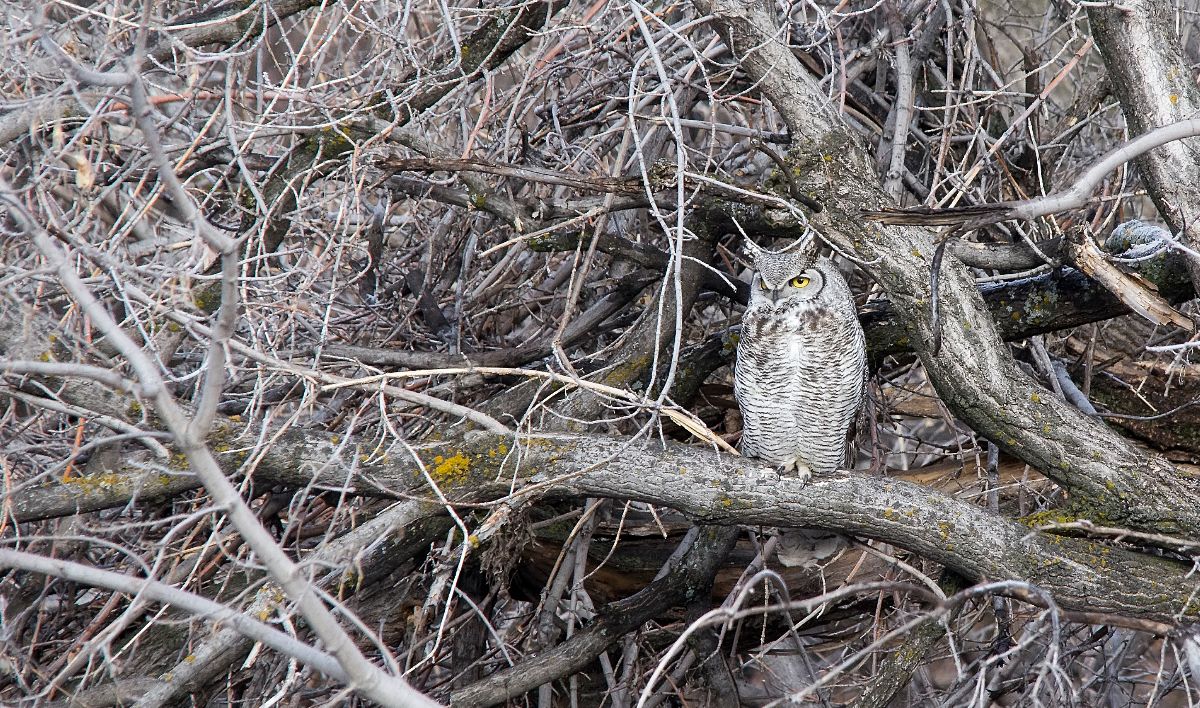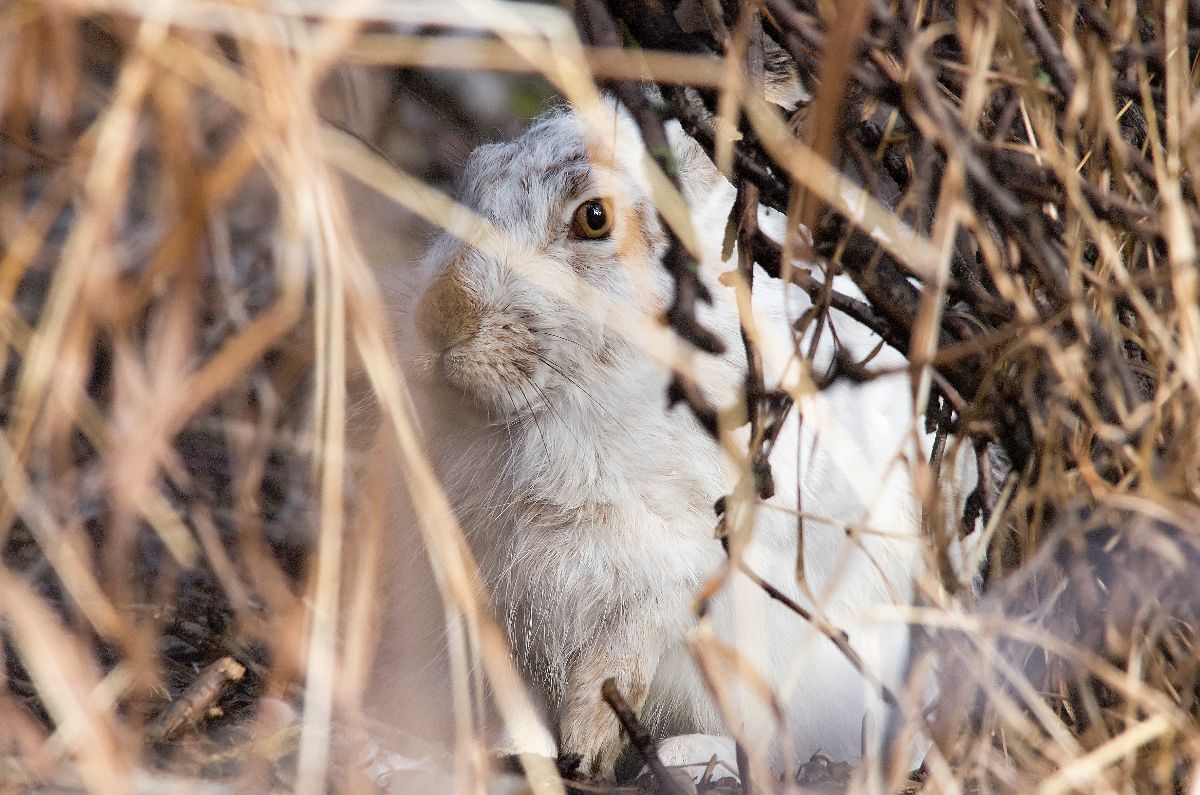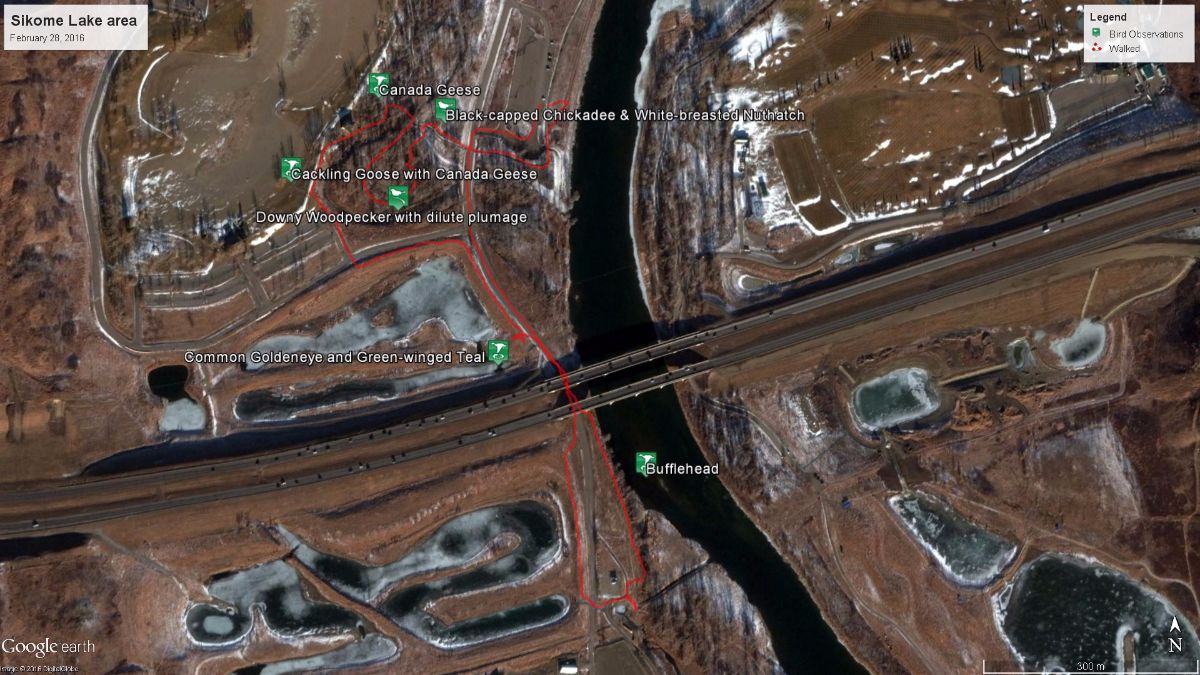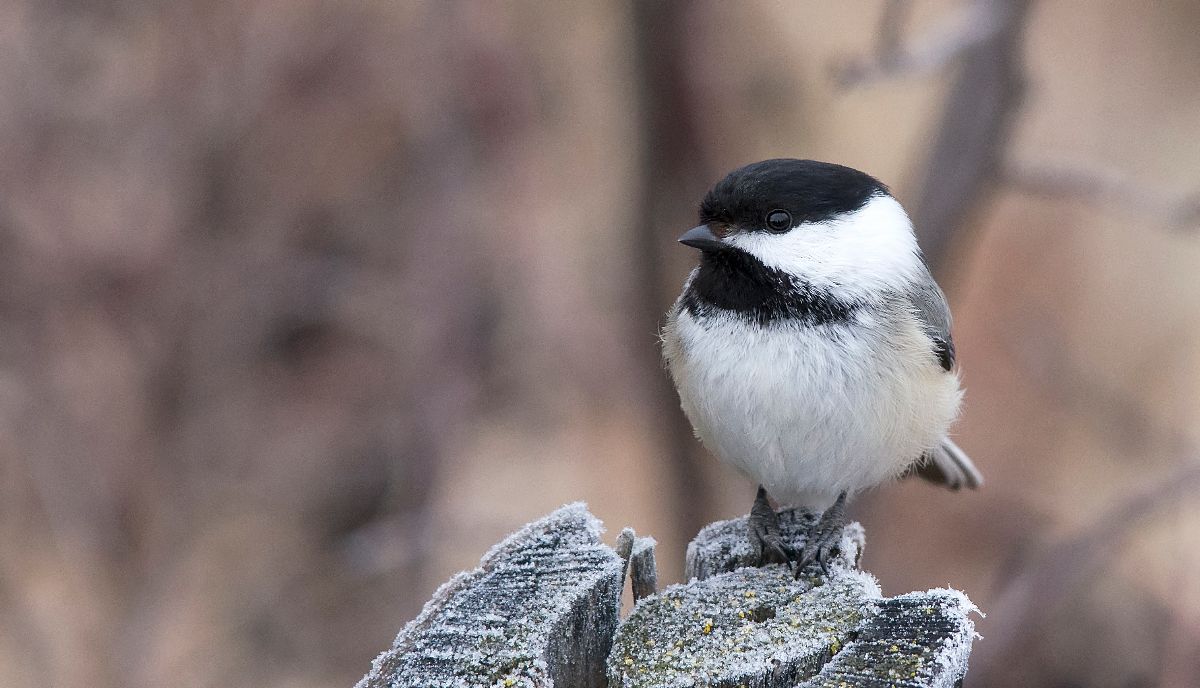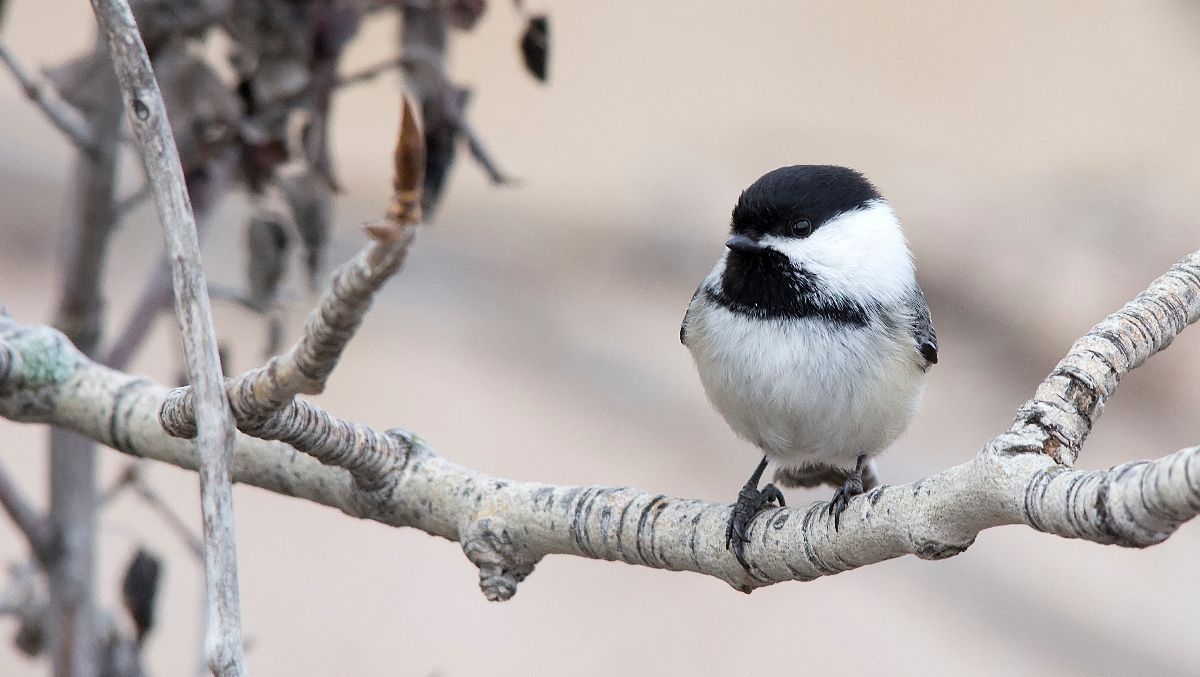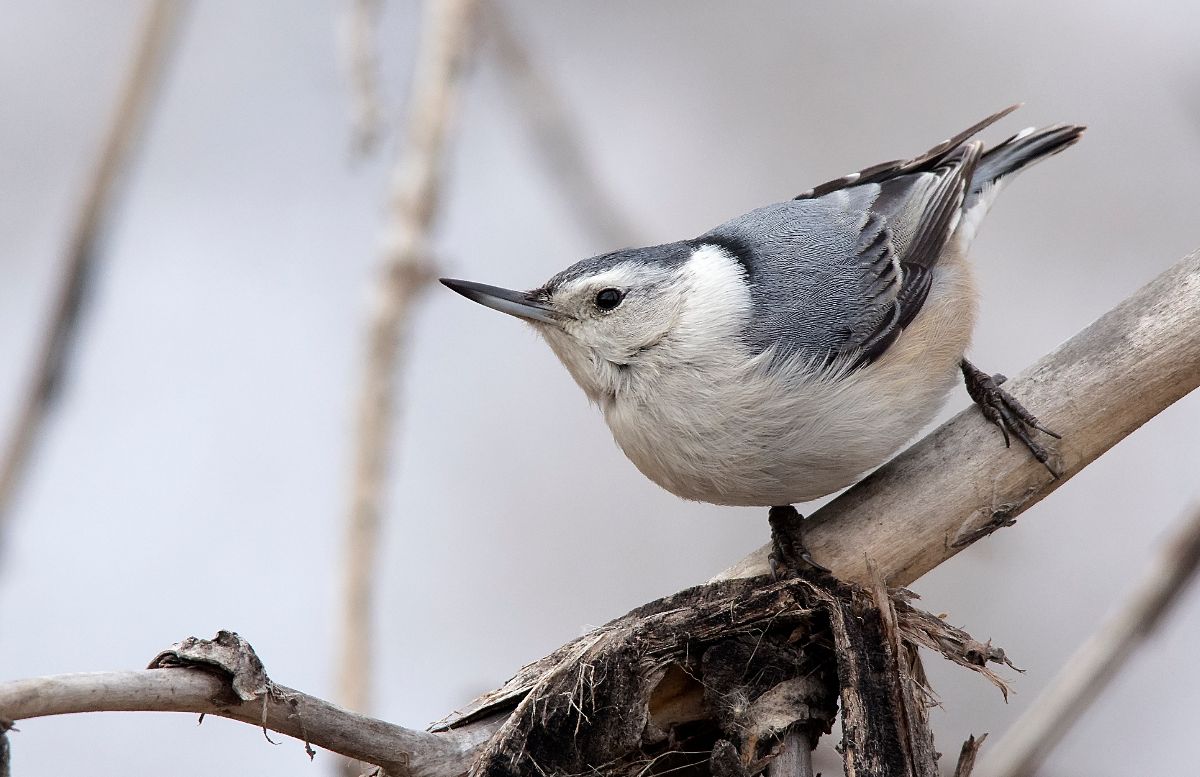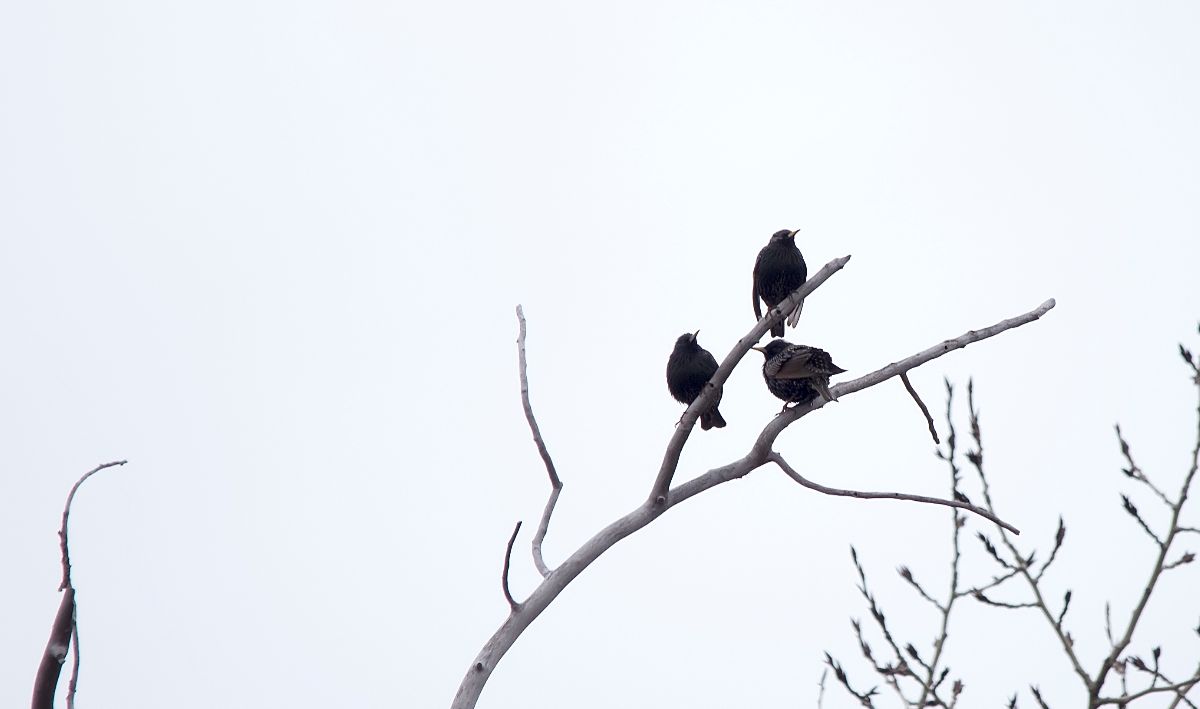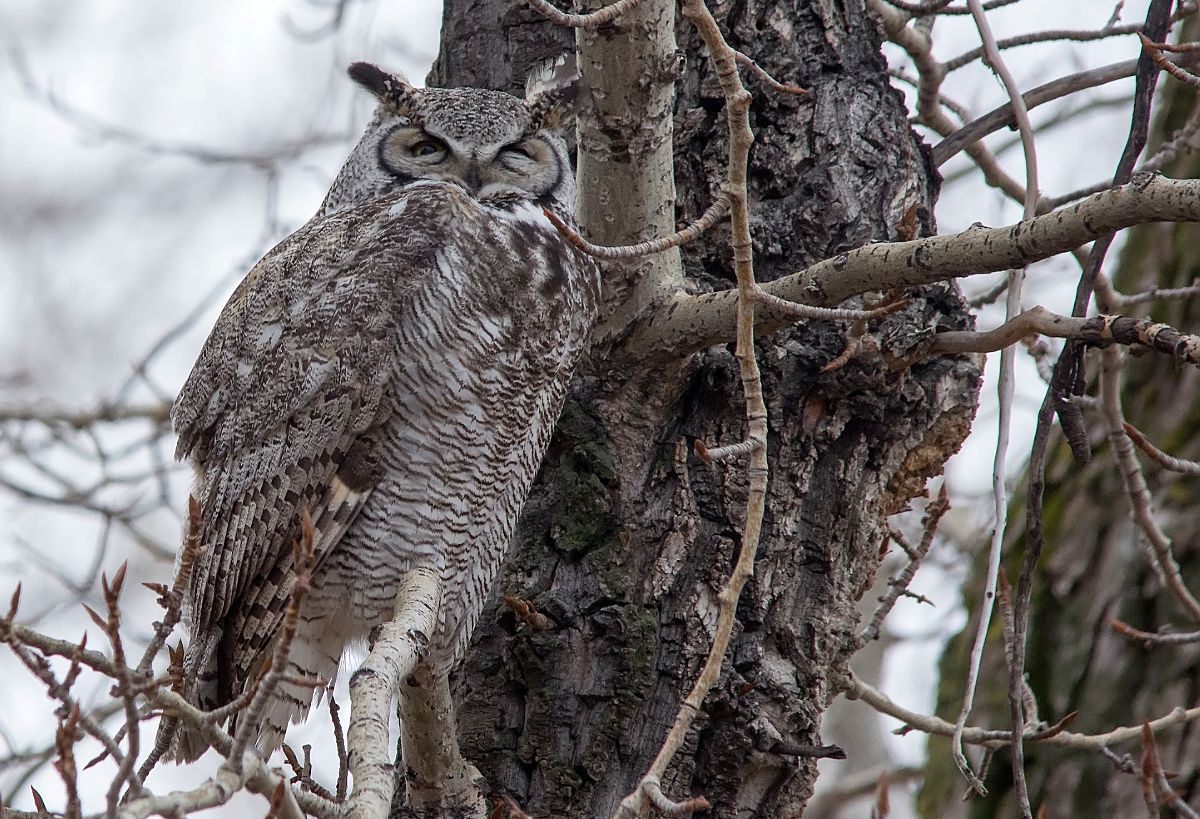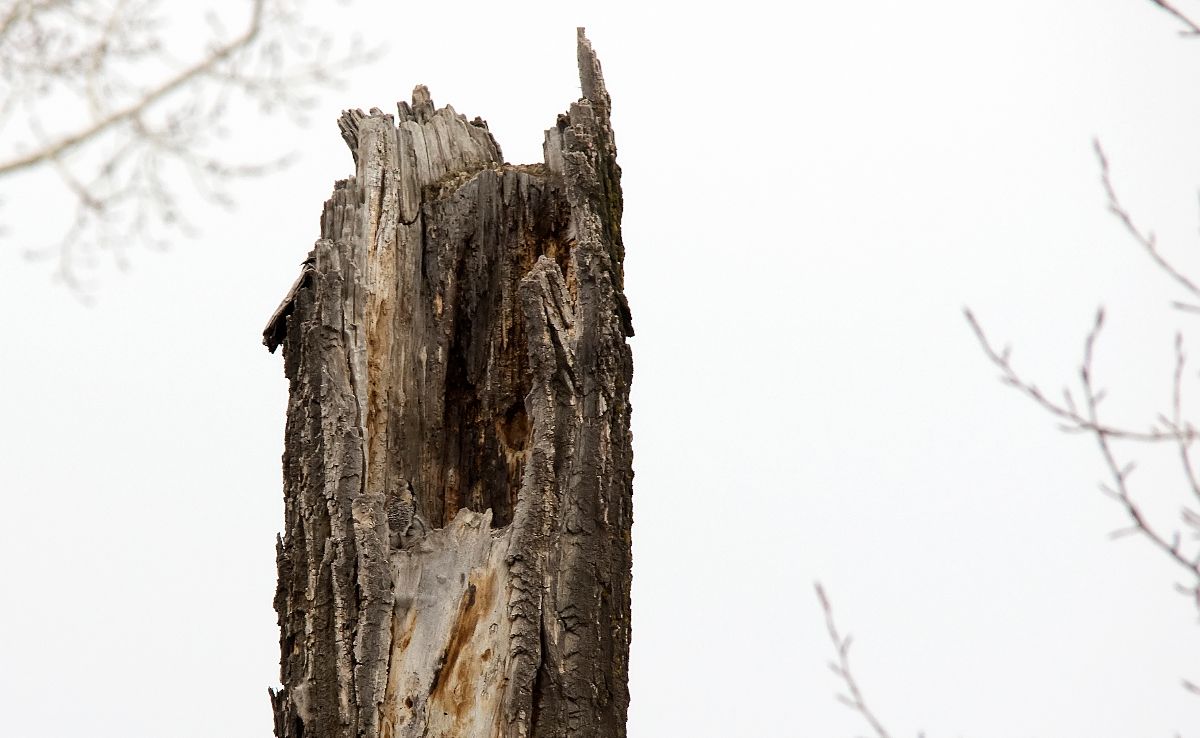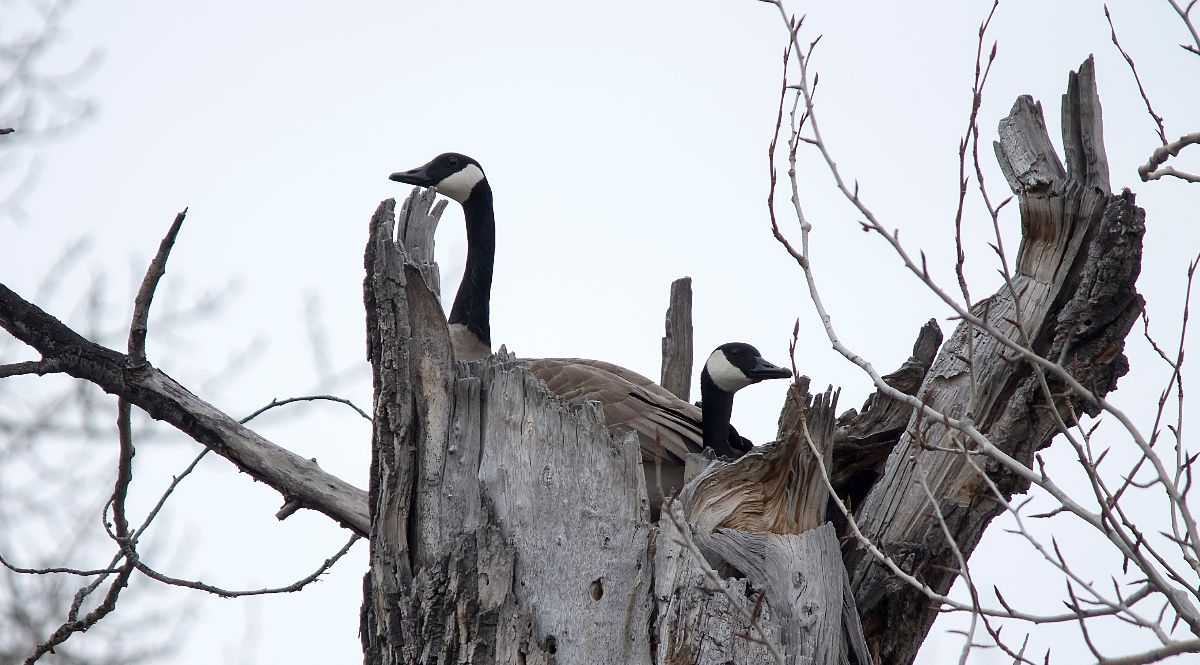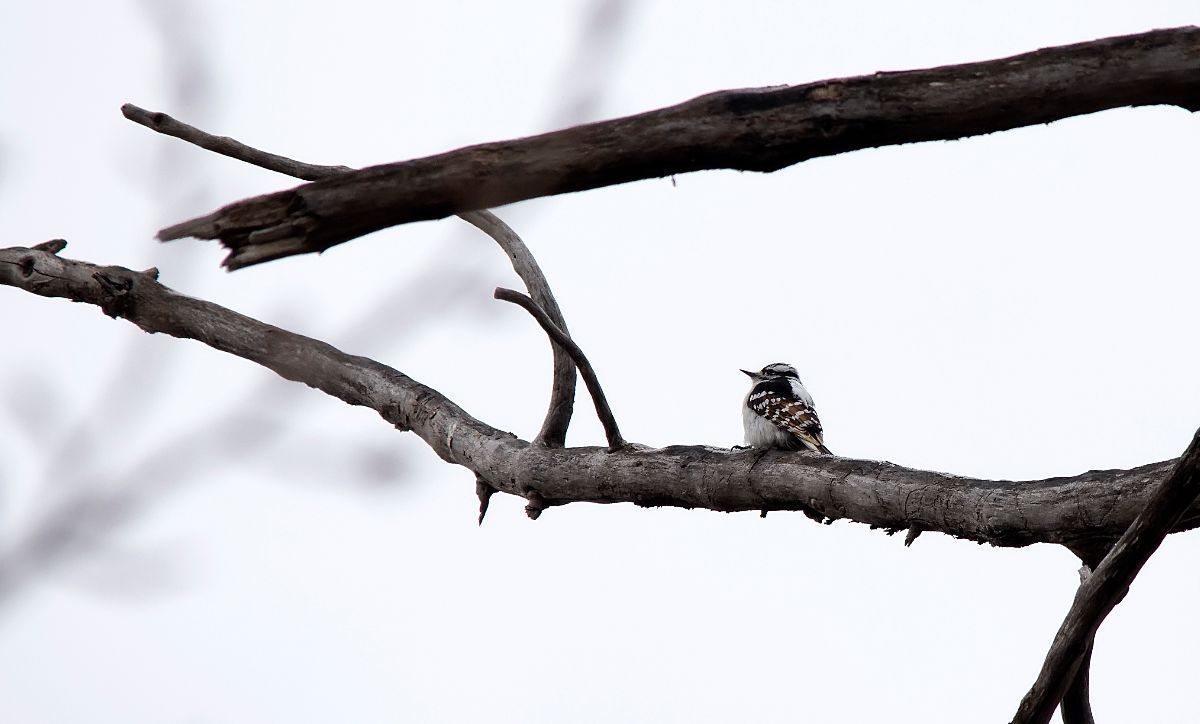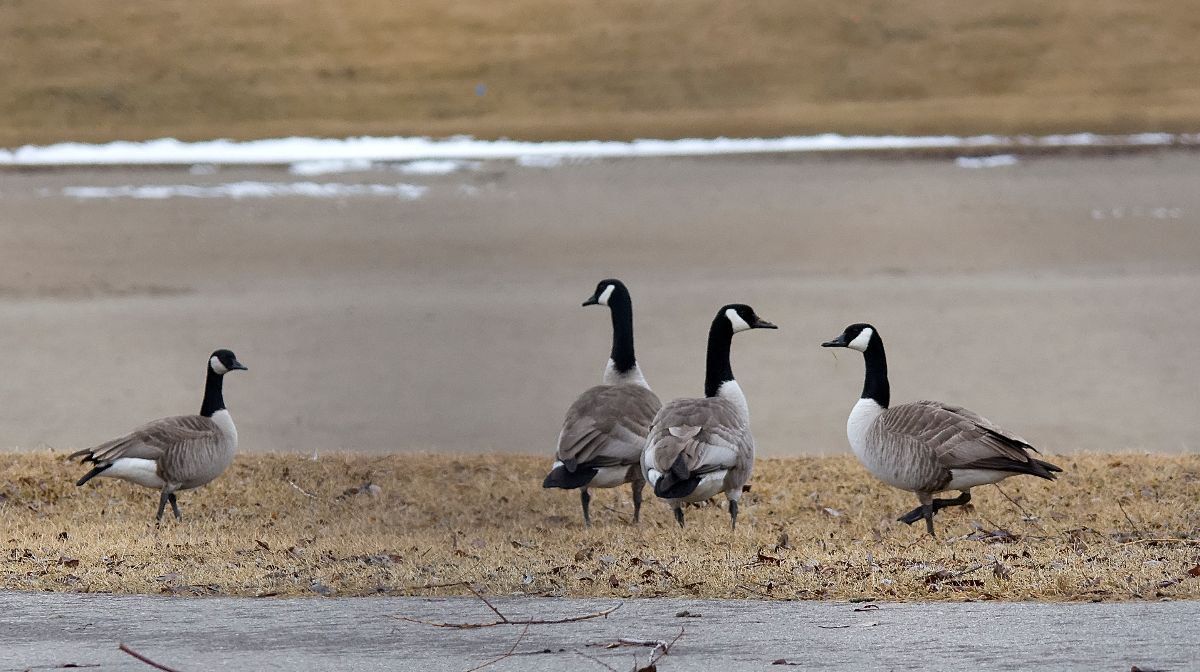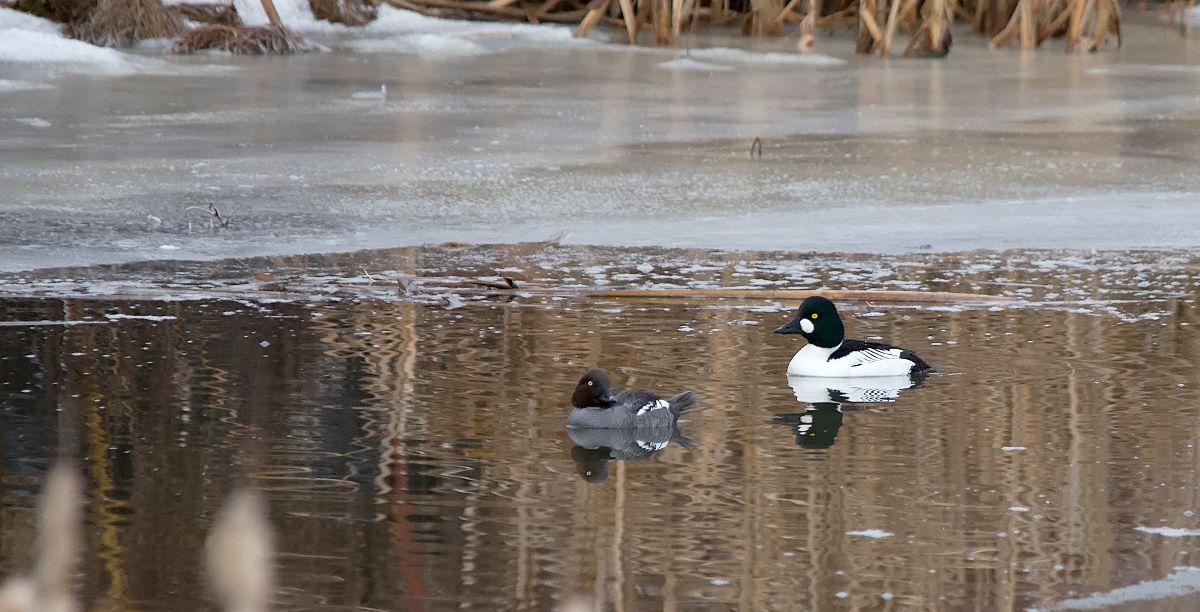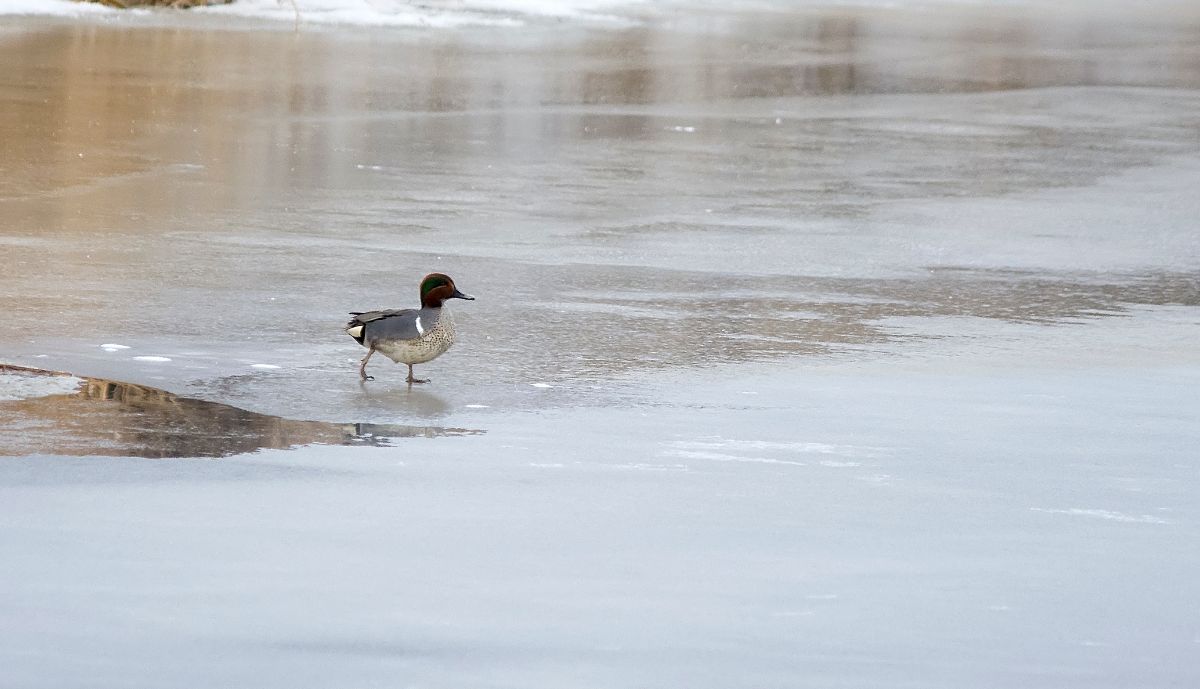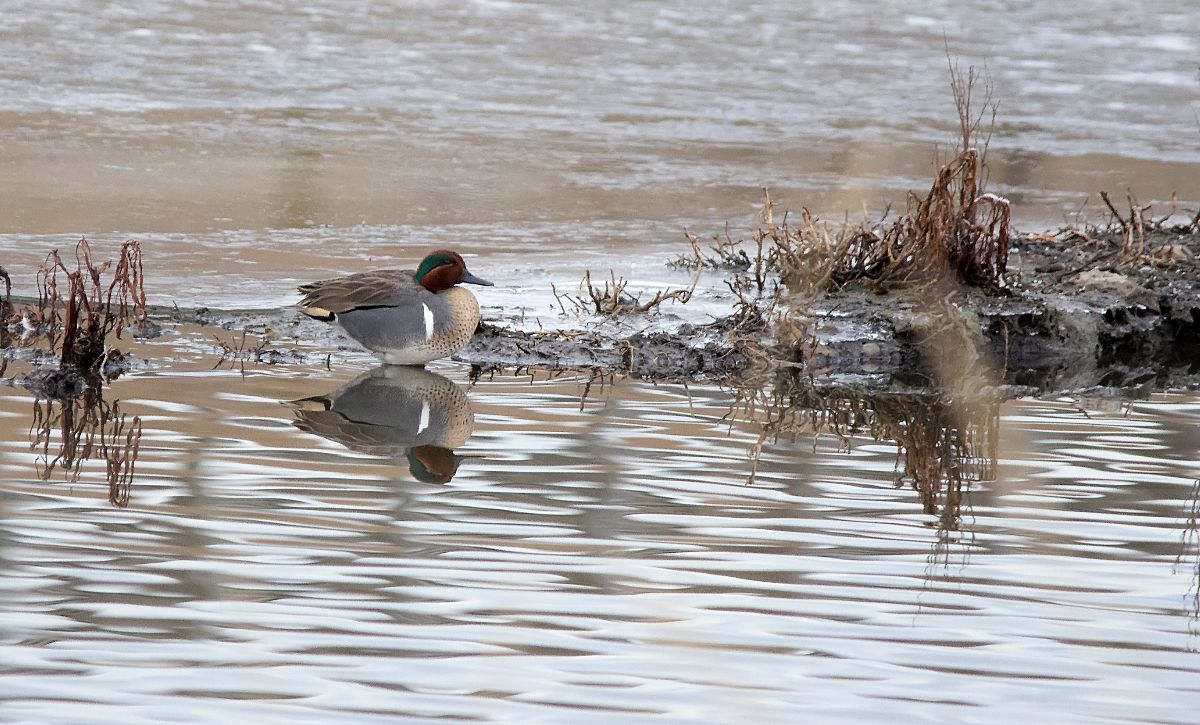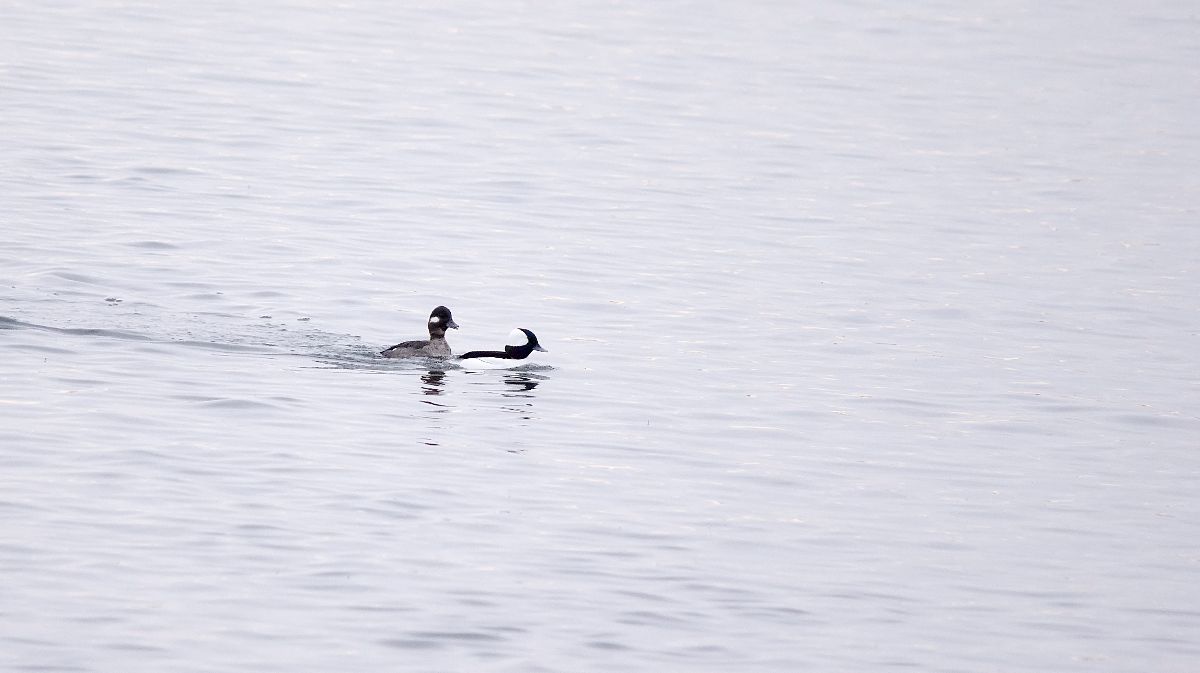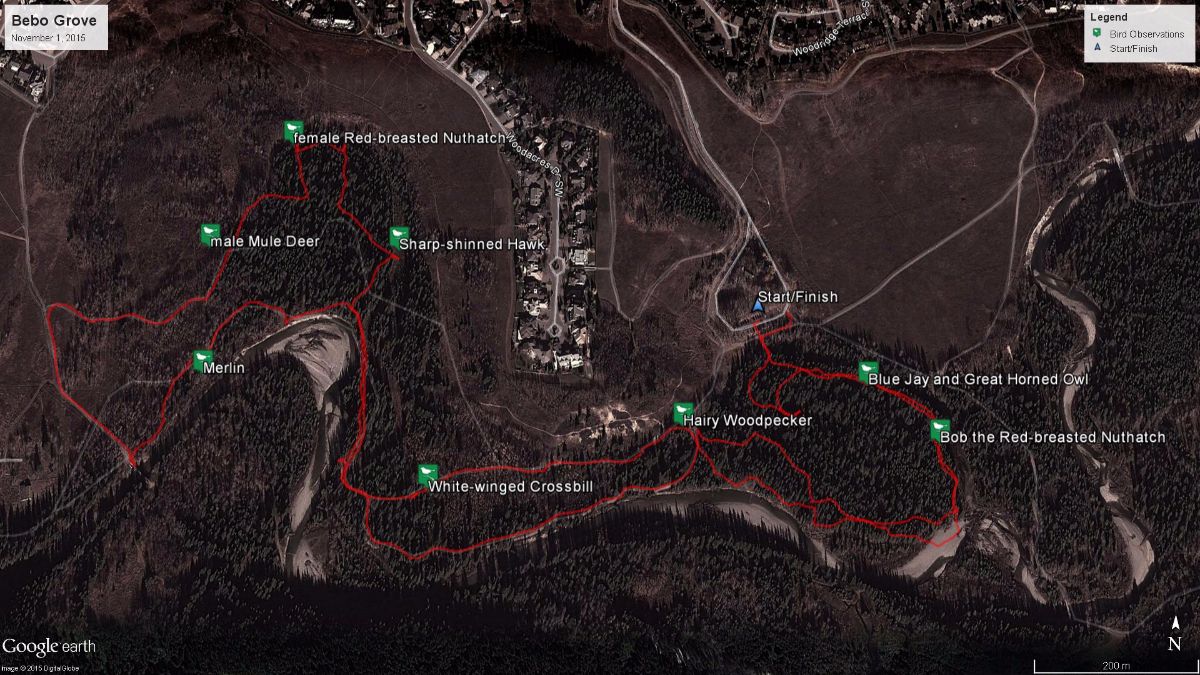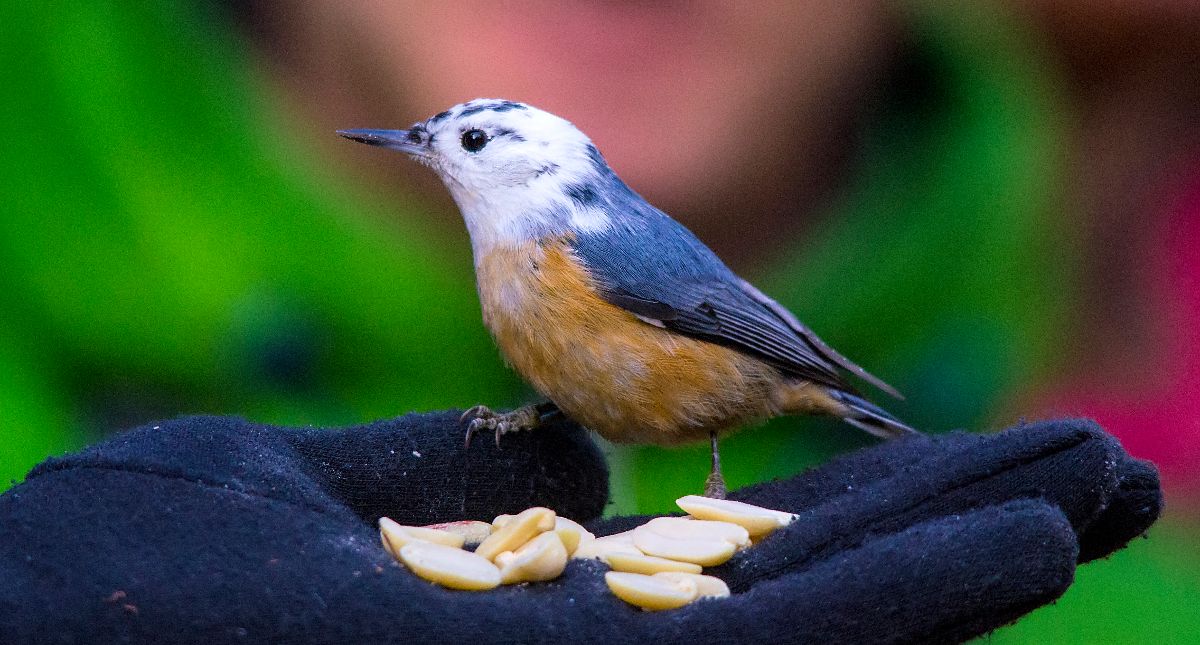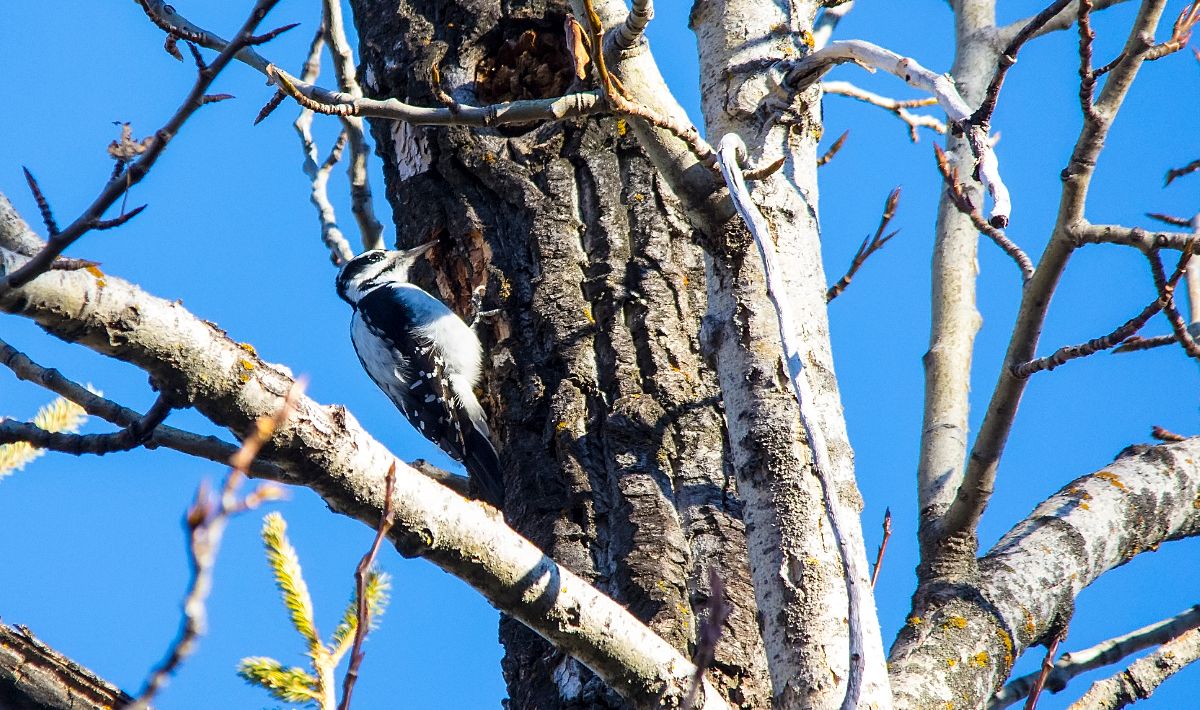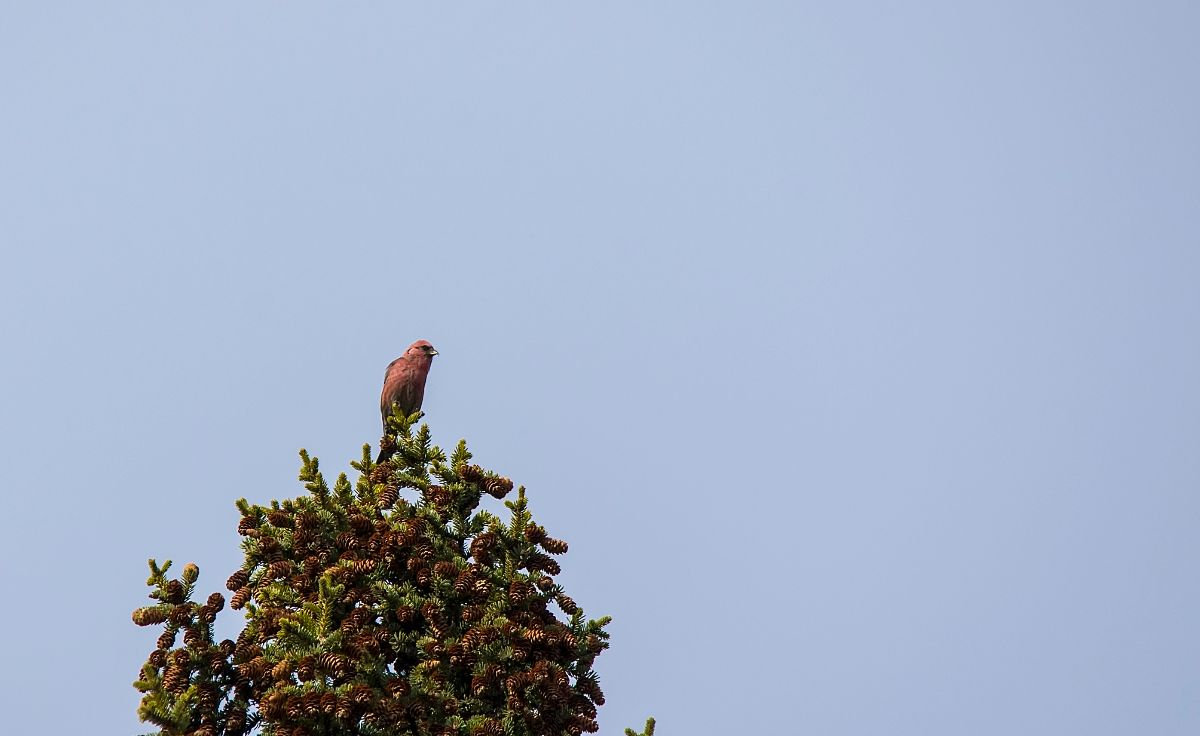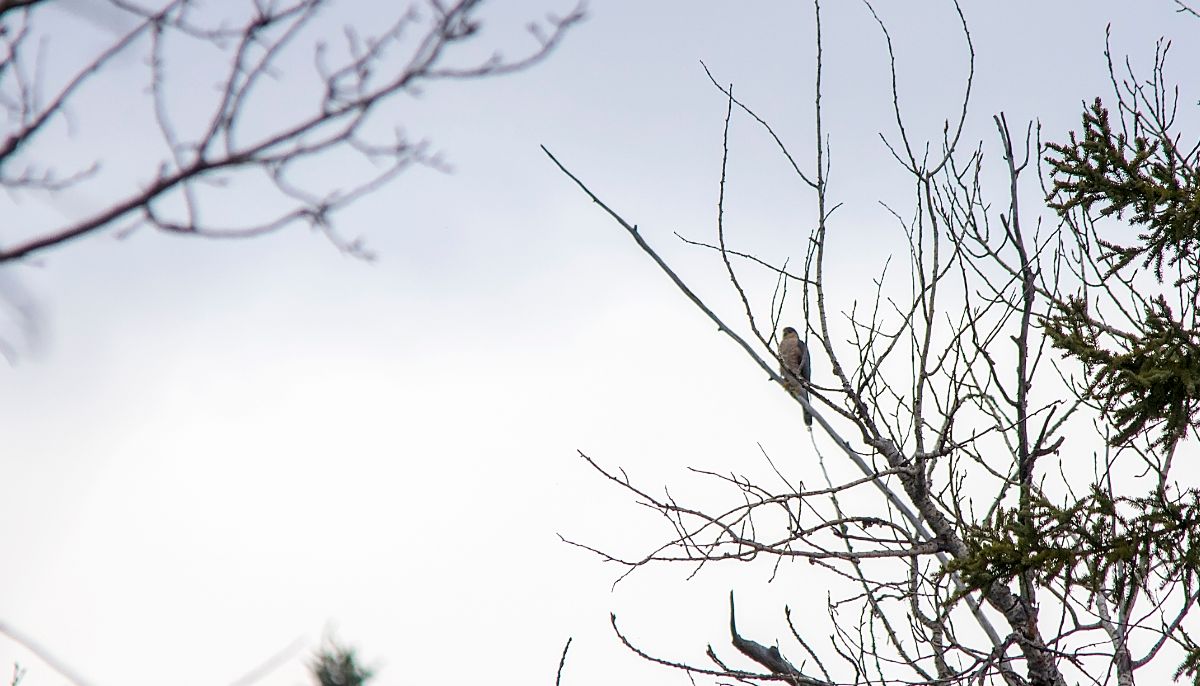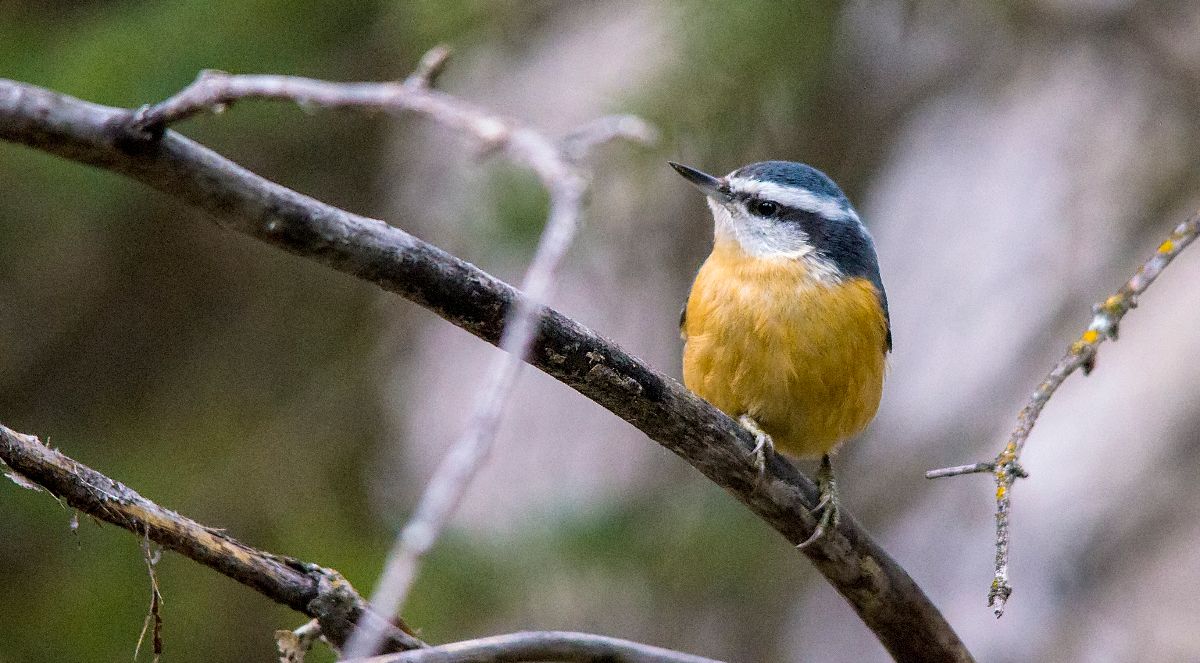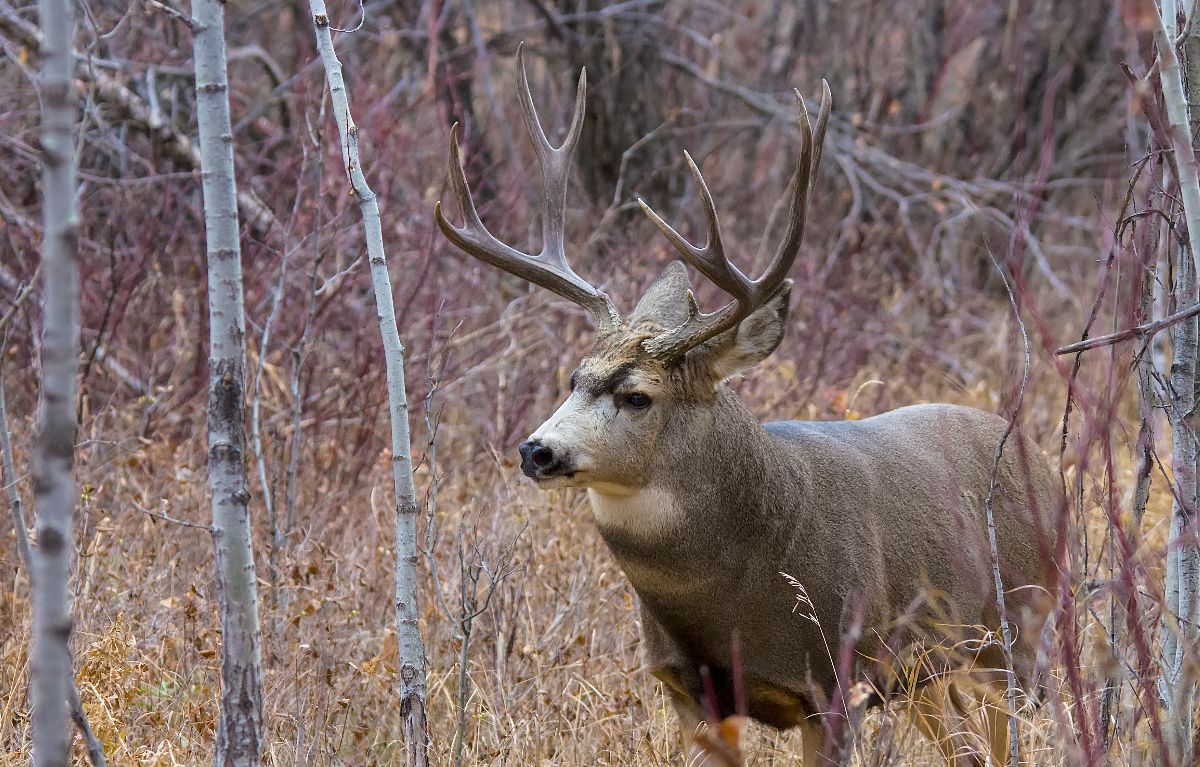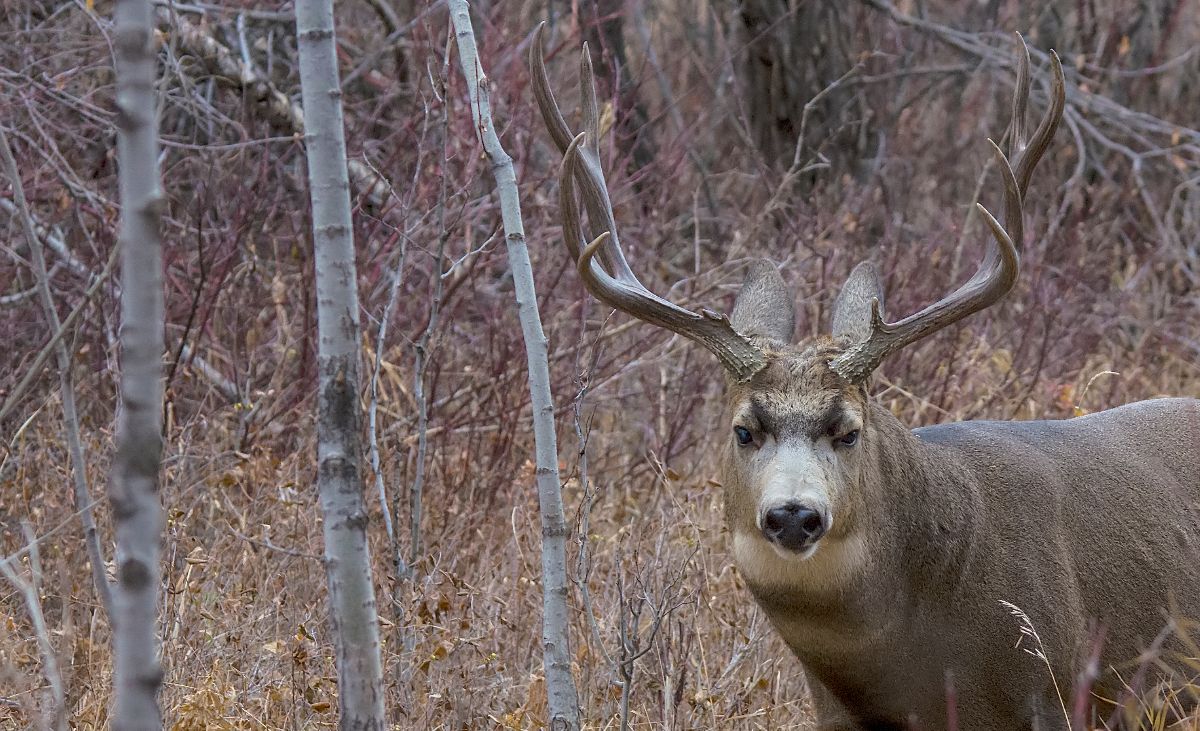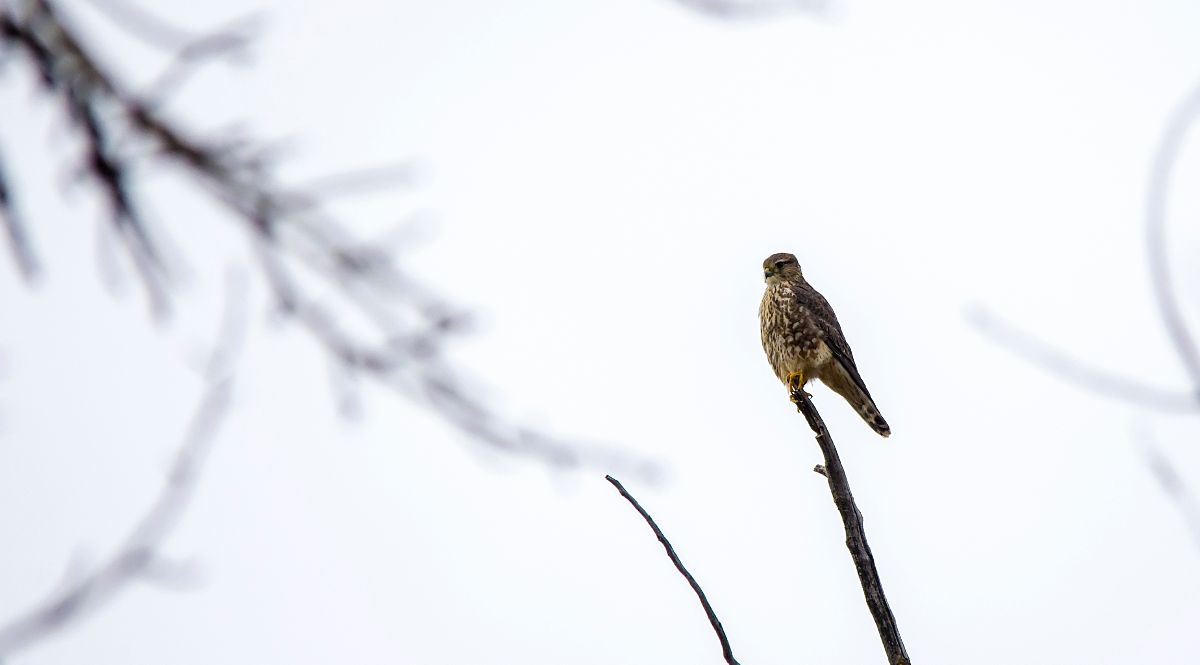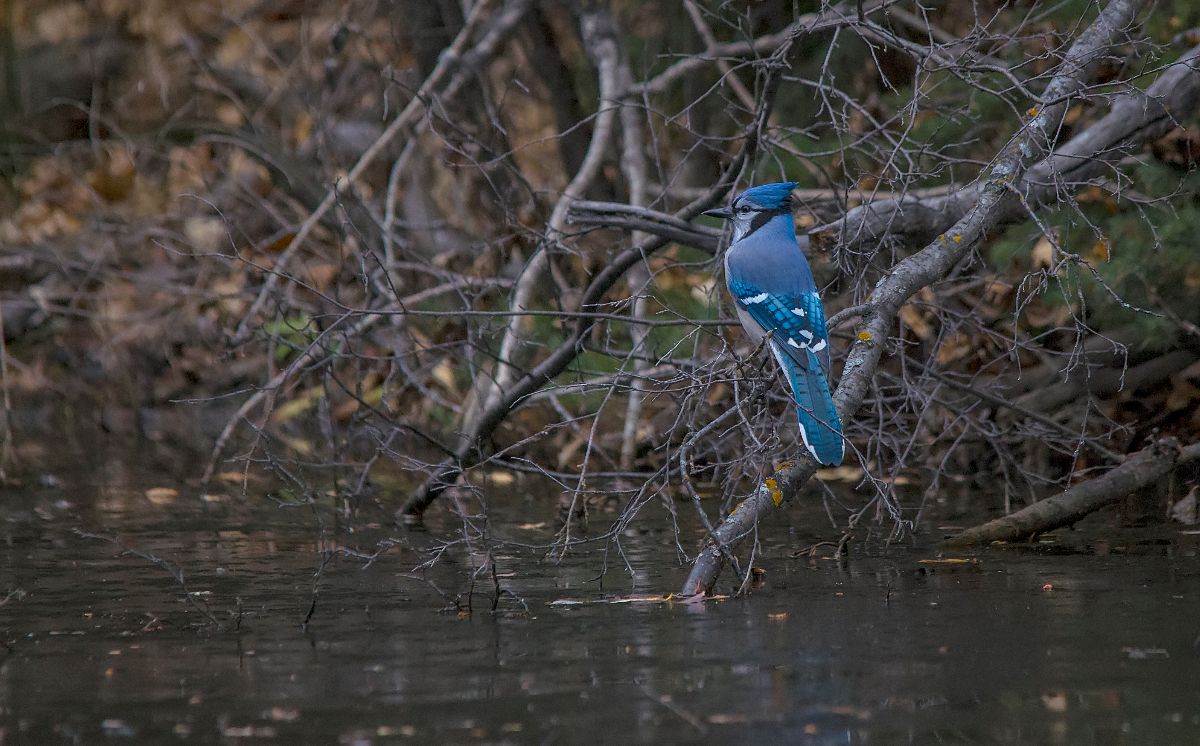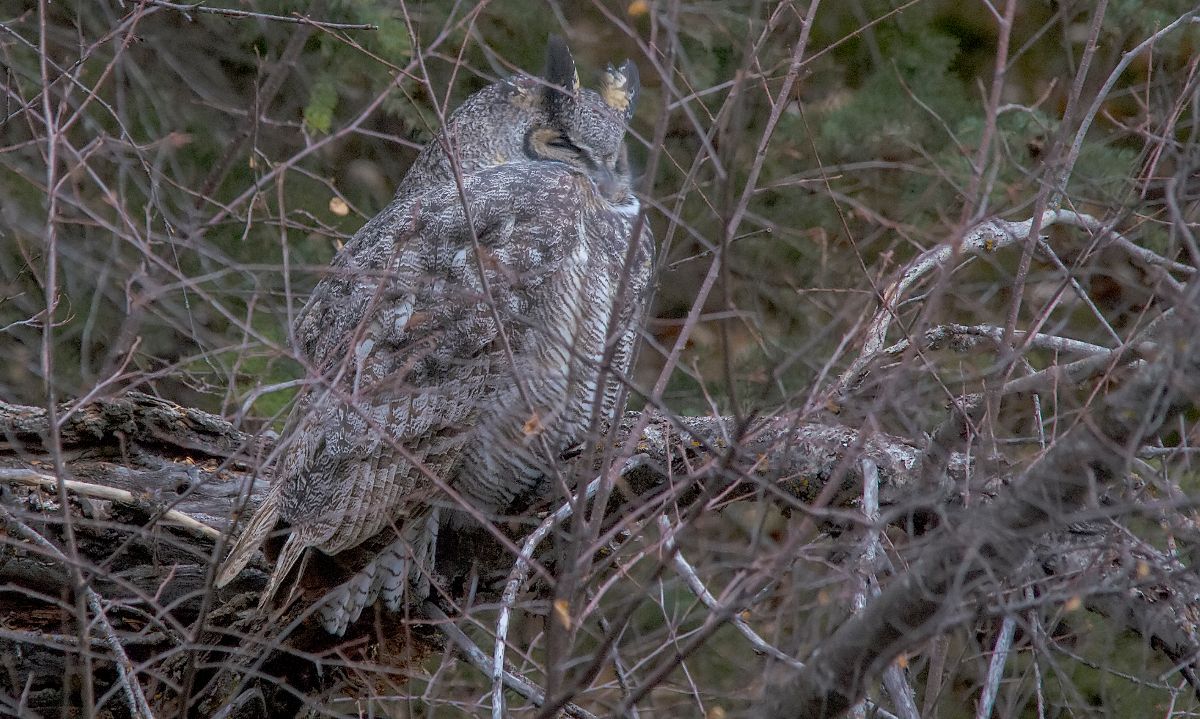By Terry Korolyk
On Saturday, September 17, I decided to go birding to the area between Strathmore and Irricana as my wife was otherwise occupied. This included an area known as the Irricana Sloughs, a once well-known birding destination for many birders in the 1980s, 1990s, and, early in the new millennium. Today, it is still visited by some birders, but, these days more areas have been explored and opened up for birders, so, the choices are greater.
Nonetheless, I set out on this beautiful Fall day. I had chosen the large slough at the Cattleland Feedlots at the north end of Highway 817 north of Strathmore as my starting point. On the way out there, I passed a few migrating Swainson’s Hawks some of them following farmers on their machines who were busy cutting their crops, then, driving north of Conrich, as I approached Highway 564, a congregation of Black-billed Magpies and Ravens were gathered along the roadside. I slowed down hoping to see what the reason might be for this gathering, but, could see nothing.
When I arrived at Cattleland, I was hoping to see Greater White-fronted Geese as over 300 of the birds had recently been reported there. This site had become known as the one that almost always had the first birds of that species to arrive in our area in Fall migration usually in late August. The same had held true this year. This location and Namaka and Eagle Lakes southeast of Strathmore were the best White-fronted Geese sites near Calgary.

Islands at Cattleland Reservoir. Photo Sept. 17, 2016
But, none were there on this day. The water level was high, but, it had been that kind of Summer. The slough has 3 islands which, with the now high water, were not that far above the surface of the water. Birds tend to congregate on them, and, in breeding season, Terns, both Common and Forster’s, and, once, even a pair of Arctic Terns raised their young on them along with other species such as Canada Goose, American Avocet, and, Black-necked Stilt. This nesting of Arctic Terns in the interior of the continent was not a first; it had happened previously in Montana.
In any event, so far this Fall, the islands were being used primarily by Gulls, including all of Ring-billed, California, and Franklin’s, and, Double-crested Cormorant. Today, there wasn’t that much there to interest a birder. A flock of 13 Baird’s Sandpipers was a highlight and flocks of Icterids there such as Brewer’s, Red-winged, Yellow-headed Blackbirds and, Brown-headed Cowbirds had dwindled in numbers. Large numbers are attracted by the Feedlot following breeding season. By the way, those birding the site must be aware that sometimes a repugnant odour may waft over from the feedlot so, be warned.
I moved on from Cattleland driving eastward on Highway 564. A few kilometres on, I turned northward driving past the few residences composing Nightingale. As I turned, a male Common Grackle flew past the car. I kept on northward a few kilometres turning westward on to Township Road 262. Drive a short stretch and a very large wetland appears on the north side. I was in luck today; over 600 Greater White-fronted Geese were at the wetland. Amongst other large numbers of waterfowl were 10 Taverner’s Cackling Geese, and an adult Bald Eagle, and, a juvenile Barrow’s Goldeneye.

Greater White-fronted Geese at Range Road 245-Township Road 262 wetland, Sept. 12, 2016.
Whenever I visit this area, I try to visit this location for another reason, that being it is an excellent site for birding for passerines with nearby woodland; a willow swale, and shrub-lined and treed north-south orientation irrigation ditch running under the road to a wooded area. Large numbers of birds can move along the ditch to the woodland and birds found here have included large numbers of Yellow-rumped Warblers with other Warblers being all the common ones plus Chestnut-sided, Magnolia, Cape May, Black-throated Green, Townsend’s, Palm, Blackpoll, American Redstart, Northern Waterthrush, and, Ovenbird. I have found both Hermit and Swainson’s Thrush here along with Rusty Blackbird. Once in November, I found a Swamp Sparrow along the irrigation ditch, and, I have found Long-eared Owl in the woodland.
Driving westward from here, you enter the realm of the Irricana Sloughs starting with Long Lake just west of Range Road 253. Continuing westward will take you to Bruce Lake east of Keoma. One can head into “the Sloughs” from Twp. Rd. 262 going northward on Range Road 253 or by going north on Range Road 261. The heart of “the Sloughs” is generally acknowledged to be the waterbodies from the Range Road 261 junction eastward, and, also north from Township Road 270 north on Range Road 254.

Great Blue Heron and Double-crested Cormorants at Railway Slough.
The Irricana Sloughs offers a variety of birds. In recent years, some of the water bodies have become very popular with Grebes. Pied-billed and Red-necked Grebes both nest in substantial numbers on the large slough on Township Road 270 immediately west of Range Road 261 and on the slough on the east side of Range Road 261 just south of Township Road 270. Immediately east of the slough on Twp. Rd. 270 east of Range Road 261 is a slough called Railway Slough which, next to Namaka and Frank Lakes, is the most convenient place in the Calgary area to find Western Grebe during breeding season. If one continues eastward on Township Road 270, one may find Horned Grebe at some of the smaller marshier sloughs.

Bittern at marsh on Twp. Rd. 270 east of Range Road 261, June 4, 2016.
Another specialty of the area is the American Bittern most often found in marshy areas at the slough west of Railway Slough and at the marshy slough on the west side of Range Road 261 directly north of Township Road 270. Upland Sandpiper has often been found in grassland along the roads in the area, and, in the past, “the Sloughs” were a fairly reliable location for finding Baird’s Sparrow, an uncommon species in our area. However, there have not been many reports in recent years, but, the area is not birded as thoroughly as it once was. Both Nelson’s and Leconte’s Sparrows have, in the past, been fairly noticeable by call in some of the wetter, grassier areas. Sprague’s Pipit and Long-billed Curlew is often found in the grassland areas, and, Marsh Wren can be found in Cattail marshes.
The Irricana Sloughs used to be one of the most reliable and nearest sites in our area for watching Loggerhead Shrikes. The species has expanded its range somewhat closer to Calgary, but, Loggerheads are still found in the area. Also, if visiting the Irricana Sloughs watch for the Krider’s subspecies of Red-tailed Hawk which used to be fairly regularly seen. Western Kingbird is also a specialty of the area, but, Eastern Kingbird is also resident. Double-crested Cormorant and American White Pelican can be found on Railway Slough and all the other larger sloughs.
The series of ponds and sloughs on Range Road 254 just south of Township Road 273 are probably the best shorebirding locations in the area being at the north end of the area and with lots of shoreline. All the regular species have been there with rarer species including Hudsonian Godwit, White-rumped Sandpiper, and, Red-necked Phalarope. One of the first occurrences of breeding in the area during the rise of the Black-necked Stilt in southern Alberta in the late 1980s and early 1990s was in this area.

Nesting Black-necked Stilt.
The Irricana Sloughs have for quite a number of years now hosted small numbers of non-breeding Bonaparte’s Gulls during breeding season, mostly on Railway Slough or the slough directly west of Railway Slough. Large numbers of Swans, mostly Tundra, stop off here in migration and the Siberian counterpart to the Tundra Swan, the Bewick’s Swan has been seen here. An adult Whooper Swan paired with an adult Tundra Swan found on April 6, 2000 in “the Sloughs” was seen by many until April 11, but, its provenance was questioned by the Alberta Bird Records Committee. Was it a wild bird or an escapee? To me, the ABRC has shown itself to shy away from making tough decisions. Wild Whoopers have been reported in the Pacific Northwest, but, they are also held in captivity.

Adult Whooper Swan with adult Tundra Swan on Twp. Rd. 270 east of Range Road 253 southeast of Irricana; April 6, 2000.
Other sloughs included in the area lie on Township Road 264 west of Range Road 261 and on Range Road 264 south of Township Road 264. The slough on Twp. Rd. 264 is a marshy slough which is one of few water bodies east of Calgary which regularly hosts Common Loon during breeding season. One of the leucistic Great Horned Owls was found in the woodland in the northwest corner of the lake as you drive westward past it. A Tennessee Warbler, a species native to the foothills and mountains in the western part of the province, was heard singing in this woodland one Summer. As you continue westward, you would turn southward on Range Road 264. The large water body on your right is called Spoonbill Slough for a Spoon-billed Sandpiper, a Siberian species of shorebird, that was twice reported there. Alberta’s only Baikal Teal was found here and Greater White-fronted Geese stop off here. This water body usually hosts a good variety of species. Nelson’s Sparrow have been regular in the wet grasses at the south end.
Two other sites included in the sloughs are a marsh and woodland a couple of kilometres north of Township Road 270 on Range Road 252 and Range Road 255 running south from the Range Road 254-Township Road 270 junction. The Range Roads both these locations are situated on supply North-South orientation and, thus, provide excellent movements of migrating passerines. All the basic small songbird migrating species have been found on Range Road 252 with others being Philadelphia Vireo and, also, Broad-winged Hawk. A leucistic Great Horned Owl was found there on a Field Trip. The same can be said for Range Road 255 with Palm Warblers particularly having favoured this road. One Fall day I found several Palm Warblers in migration along the road, but, this also included 3 birds that were so brightly-coloured, I thought they may have been of the Eastern subspecies, the Yellow Palm Warbler.

Leucistic Great Horned Owl on Twp. Rd. 264 west of Range Road 264.
Probably the final water body that should be included in the Irricana Sloughs region is Bruce Lake which is on Township Road 262 a short distance west of Range Road 261. The road makes a big bend around the north end of the lake, then continues westward to Keoma with Highway 9 beyond. Black-crowned Night Herons and California Gulls used to be common along the stream at the north end and rarities found include Snowy Egret, Black-legged Kittiwake, and, Pacific Loon. Both White-winged and Surf Scoters have been seen on the lake in the Fall season. The woodlands at the north end of the lake can be good for migrating songbirds with Long-eared Owl also being found there. In the winter, Northern Goshawk has been found there, and, Ring-necked Pheasant may be found in the cattails and other marsh grasses.

Adult Little Gull with adult Bonaparte’s Gull on east side of Range Road 261 just south of Twp. Rd. 270; May 5, 2002.
Other rarities found in the Irricana Sloughs include Cattle and Great Egret, Little Gull, Sabine’s Gull, Red Phalarope, Sage Thrasher, and Yellow-billed Loon. Sandhill Crane, Townsend’s Solitaire, both Surf and White-winged Scoter, and, Turkey Vulture have all stopped off in “the Sloughs.” One rarity I was astonished to see was a THREE-TOED WOODPECKER flying from tree to tree one Fall day along Range Road 261 just south of Township Road 270. This, of course, is a species native to the CONIFEROUS forests of the foothills and mountains!

Gyrfalcon, Oct. 19, 2013.
Great Horned Owl is resident. Winter sees Snowy Owls and all of Gyrfalcon, Prairie Falcon, and, Rough-legged Hawk found in the area while weedy fields and ditches attract both Common and Hoary Redpolls, while, windswept fields and roads attract both Snow Buntings and Horned Larks. Some winters you may even find a Northern Goshawk out on the prairie there.
————————————————————————————-
Fall Migration, 2016——
Sabine’s Gull, always a much sought after bird in the Fall, was a bit late showing up this year. The birds are usually here by the first week of September, but, this year September 16 was the first date of report with an adult and an immature bird at Calgary’s Glenmore Reservoir. Since then, a single Sabine’s was seen at Tofield and 3 birds were at Frank Lake east of High River. The 2 Glenmore Reservoir birds were joined by a single bird on September 17.
Major highlights so far include an adult hybrid CALIFORNIA GULL-RING-BILLED GULL at the Shepard Landfill at the east end of McIvor Boulevard in southeast Calgary on September 22, and, a juvenile LITTLE GULL at the Chestermere Lake Dam on September 26. Five first-cycle Thayer’s Gulls were at the Peigan Trail Gull Ponds below the City of Calgary Landfill on September 22.

Juvenile Little Gull at the Chestermere Lake Dam September 26, 2016.

Adult California Gull-Ring-billed Gull hybrid at the Shepard Landfill, September 22, 2016.
A male BLACK-THROATED BLUE WARBLER was photographed in a yard in Canmore on September 23. While still a vagrant in the province, the species is fairly regular with most reports coming in the Fall in frosty or near frosty weather.
Scoters are starting to hit the Calgary area as of this writing with 5 Surf Scoters at Glenmore Reservoir and another 5 were with a White-winged Scoter at Eagle Lake, all of these birds being seen on September 23. No northern Loons as yet.
There have been more Swamp Sparrow reports than usual in the Calgary area this Fall, and, also a couple of wandering Varied Thrushes. A Harlequin Duck was reported via E-bird at Wyndham-Carseland PP on September 18.
Snow Geese are slow to arrive this year, but dark and unusual morph Red-tailed Hawks are seen almost daily now in the Calgary area. There are still some Swainson’s Hawks around, while there have been only a couple of Rusty Blackbird reports so far. From Ken Orich, young Barn Swallows fledged from a nest at Tillebrook PP at Brooks on the amazing date of September 19!
Until next time. Terry Korolyk

















































